 Search by Keyword
Sign Up Below for our MONTHLY BEATLES TRIVIA QUIZ!
|
“STRAWBERRY FIELDS FOREVER”
(John Lennon – Paul McCartney)
“We’ve had enough of performing forever,” stated John Lennon in 1967. “I can’t imagine any reason which would make us do any sort of tour again. We’re all really tired. It does nothing for us any more – which is really unfair to the fans, we know, but we’ve got to think of ourselves.”
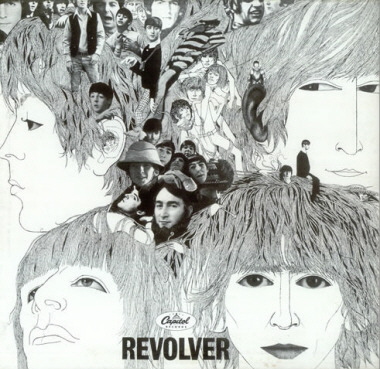 “After deciding not to tour I don’t think we cared a damn,” recalls Ringo Starr. “We’d been having more fun in the studio, as you can hear from ‘Revolver’ and ‘Rubber Soul’…Instead of being pulled out of the studio to go on the road, we could now spend time there and relax.” “After deciding not to tour I don’t think we cared a damn,” recalls Ringo Starr. “We’d been having more fun in the studio, as you can hear from ‘Revolver’ and ‘Rubber Soul’…Instead of being pulled out of the studio to go on the road, we could now spend time there and relax.”
“The quality of the music wasn’t good, and it wasn’t getting any better with the touring,” remembers Paul McCartney. “We all agreed that maybe going into recording would be the new thing to turn us all on.”
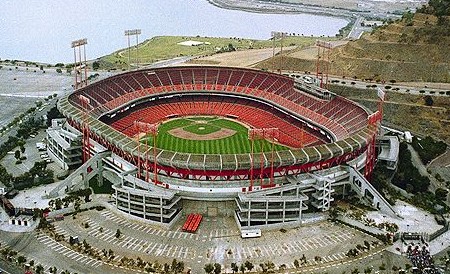 And so, with their final live performance at San Francisco’s Candlestick Park on August 29th, 1966, The Beatles permanently retired from touring. After nearly a three month break from being “Beatles,” they reconvened in London’s EMI Studios to spend as much time as they fancied in expanding their musical palette without the encumbrance of upcoming live performance commitments. And, since EMI owned both the studios and The Beatles recordings, studio time was not deducted from the band’s royalties, which allowed them open-ended studio time without a budget limit. And so, with their final live performance at San Francisco’s Candlestick Park on August 29th, 1966, The Beatles permanently retired from touring. After nearly a three month break from being “Beatles,” they reconvened in London’s EMI Studios to spend as much time as they fancied in expanding their musical palette without the encumbrance of upcoming live performance commitments. And, since EMI owned both the studios and The Beatles recordings, studio time was not deducted from the band’s royalties, which allowed them open-ended studio time without a budget limit.
 “When I first started in the music business,” stated producer George Martin, “the ultimate aim for everybody was to try and recreate, on record, a live performance as accurately as possible. But then, we realized that we could do something other than that. In other words, the film doesn’t just re-create the stage play. So, without being too pompous, we decided to go into another kind of art form, where we are devising something that couldn’t be done any other way. We were putting something down on tape that could only be done on tape.” “When I first started in the music business,” stated producer George Martin, “the ultimate aim for everybody was to try and recreate, on record, a live performance as accurately as possible. But then, we realized that we could do something other than that. In other words, the film doesn’t just re-create the stage play. So, without being too pompous, we decided to go into another kind of art form, where we are devising something that couldn’t be done any other way. We were putting something down on tape that could only be done on tape.”
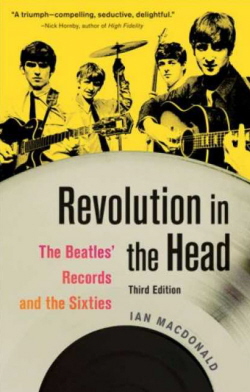 With this revitalized vigor, The Beatles’ first foray into full-time studio recording experimentation resulted in what has been described by endless authors as a masterpiece. “A landscape of the mind, not of the world” (David Laing), “one of pop music’s finest achievements…a magnum opus, perhaps the landmark Beatles record” (Chris Ingham), “technologically evolved folk music” (Ian MacDonald), “a record that never dates, because it lives outside time” (John Robertson). Such is the justified praise for “Strawberry Fields Forever.” With this revitalized vigor, The Beatles’ first foray into full-time studio recording experimentation resulted in what has been described by endless authors as a masterpiece. “A landscape of the mind, not of the world” (David Laing), “one of pop music’s finest achievements…a magnum opus, perhaps the landmark Beatles record” (Chris Ingham), “technologically evolved folk music” (Ian MacDonald), “a record that never dates, because it lives outside time” (John Robertson). Such is the justified praise for “Strawberry Fields Forever.”
Songwriting History
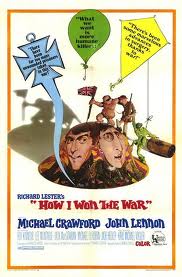 With nothing on The Beatles agenda for nearly three months, John was persuaded by director Richard Lester to appear in a movie entitled “How I Won The War,” filming commencing on September 6th, 1966 and stretching until November 6th. Filming began in Celle, West Germany but, from September 19th through till the end of the shooting on November 6th, the filming moved to various locations in Carboneras in Southern Spain. John shared a rented house with costar Michael Crawford in Santa Isabel, near Almeria, during their stay in Spain. It was during this time that John began writing “Strawberry Fields Forever.” With nothing on The Beatles agenda for nearly three months, John was persuaded by director Richard Lester to appear in a movie entitled “How I Won The War,” filming commencing on September 6th, 1966 and stretching until November 6th. Filming began in Celle, West Germany but, from September 19th through till the end of the shooting on November 6th, the filming moved to various locations in Carboneras in Southern Spain. John shared a rented house with costar Michael Crawford in Santa Isabel, near Almeria, during their stay in Spain. It was during this time that John began writing “Strawberry Fields Forever.”
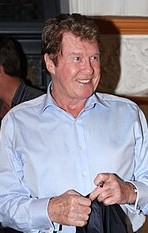 “We didn’t do much in the evenings except play Monopoly and Risk,” remembers Michael Crawford about their stay at this dingy house. “John was a very enigmatic character. There was not a lot revealed, freely. He was writing ‘Strawberry Fields.’ He sat himself in his bedroom and worked out melodies on his guitar. I heard him playing the same bar over and over again until he got the right sequence. It was interesting listening to how a song was written. At the time, I learnt nothing about why these lyrics existed, or why he was writing them.” As evidenced by the demo recordings of the song made while in Almeria, Michael Crawford no doubt heard John playing the second verse over and over again, which was the only verse he had at the time. “We didn’t do much in the evenings except play Monopoly and Risk,” remembers Michael Crawford about their stay at this dingy house. “John was a very enigmatic character. There was not a lot revealed, freely. He was writing ‘Strawberry Fields.’ He sat himself in his bedroom and worked out melodies on his guitar. I heard him playing the same bar over and over again until he got the right sequence. It was interesting listening to how a song was written. At the time, I learnt nothing about why these lyrics existed, or why he was writing them.” As evidenced by the demo recordings of the song made while in Almeria, Michael Crawford no doubt heard John playing the second verse over and over again, which was the only verse he had at the time.
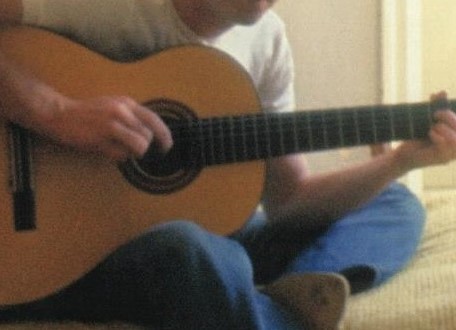 “He used to sit cross-legged on the beach or on the bed,” Michael Crawford continues, “the two places where one would see him with a guitar, and he would go, ‘Strawberry Fields Forever…well, I’m not sure,’ and I’d say, ‘Oh, it’s great, John. Really, it’s good. I wouldn’t mess with it!’ It just sounded so great, and he’s going, ‘I’m not sure…I’m not sure.’” “He used to sit cross-legged on the beach or on the bed,” Michael Crawford continues, “the two places where one would see him with a guitar, and he would go, ‘Strawberry Fields Forever…well, I’m not sure,’ and I’d say, ‘Oh, it’s great, John. Really, it’s good. I wouldn’t mess with it!’ It just sounded so great, and he’s going, ‘I’m not sure…I’m not sure.’”
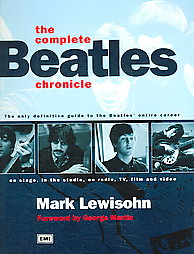 “We were in Almeria,” John himself explained in 1980, “and it took me six weeks to write the song. I was writing it all the time I was making the film. (And as anybody knows about film work, there’s a lot of hanging around.) I have an original tape of it somewhere – of how it sounded before it became the psychedelic sounding song it became on record.” An estimation of these “six weeks,” according to Mark Lewisohn's book "The Complete Beatles Chronicle," indicates that “Strawberry Fields Forever” was mostly written between September 26th and November 6th, 1966, which was the final day of filming for the movie. “We were in Almeria,” John himself explained in 1980, “and it took me six weeks to write the song. I was writing it all the time I was making the film. (And as anybody knows about film work, there’s a lot of hanging around.) I have an original tape of it somewhere – of how it sounded before it became the psychedelic sounding song it became on record.” An estimation of these “six weeks,” according to Mark Lewisohn's book "The Complete Beatles Chronicle," indicates that “Strawberry Fields Forever” was mostly written between September 26th and November 6th, 1966, which was the final day of filming for the movie.
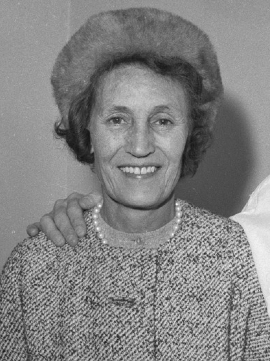 The above-mentioned tape is a very interesting listen, showing the genesis of the song as he was writing it. The only verse he had at first, which was repeated many times, consisted of the lyrics “There's no one on my wavelength / I mean, it's either too high or too low / That is you can't, you know, tune in, but it's all right / I mean it's not too bad." The tape then reveals that he obscured the thought slightly by changing “on my wavelength” to “in my tree.” It also appears from listening to this early demo that he may have intended the title of the song to be “It's Not Too Bad” (although this has never been verified). John then plays around with what eventually became the chorus, although “Strawberry Fields” was not mentioned. When the demo shows that he finally does incorporate “Strawberry Fields” into the lyrics, he adds the lyric “nothing to get mad about,” which some sources say refers to his Aunt Mimi getting upset about John playing in nearby Strawberry Field as a child, this being a children's community home run by the Salvation Army at Beaconsfield Road, Woolton, Liverpool L25 6LJ. John reportedly would reply to her, “They can't hang you for it.” Allegedly, remembering this inspired John to change the line to “nothing to get hung about." The above-mentioned tape is a very interesting listen, showing the genesis of the song as he was writing it. The only verse he had at first, which was repeated many times, consisted of the lyrics “There's no one on my wavelength / I mean, it's either too high or too low / That is you can't, you know, tune in, but it's all right / I mean it's not too bad." The tape then reveals that he obscured the thought slightly by changing “on my wavelength” to “in my tree.” It also appears from listening to this early demo that he may have intended the title of the song to be “It's Not Too Bad” (although this has never been verified). John then plays around with what eventually became the chorus, although “Strawberry Fields” was not mentioned. When the demo shows that he finally does incorporate “Strawberry Fields” into the lyrics, he adds the lyric “nothing to get mad about,” which some sources say refers to his Aunt Mimi getting upset about John playing in nearby Strawberry Field as a child, this being a children's community home run by the Salvation Army at Beaconsfield Road, Woolton, Liverpool L25 6LJ. John reportedly would reply to her, “They can't hang you for it.” Allegedly, remembering this inspired John to change the line to “nothing to get hung about."
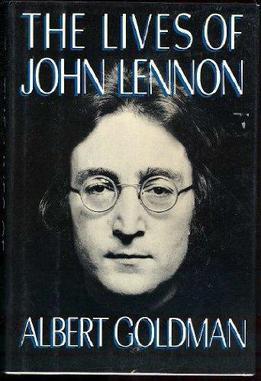 "There was something about the place that always fascinated John," related Aunt Mimi in the book "The Lives Of John Lennon." "He could see it from his window, and he loved going to the garden party they had each year. He used to hear the Salvation Army band, and he would pull me along, saying, 'Hurry up, Mimi - we're going to be late!'" The book's author Albert Goldman adds that "it is highly characteristic of John Lennon that his nostalgic recollection of childhood should turn on a symbol of pain even more than of pleasure. He knew perfectly well that the little girls in blue and white dresses, their straw boaters tied with red ribbons about their chins, were orphans, like himself. Strawberry Field was not simply John Lennon's playground - it was his spiritual home." "There was something about the place that always fascinated John," related Aunt Mimi in the book "The Lives Of John Lennon." "He could see it from his window, and he loved going to the garden party they had each year. He used to hear the Salvation Army band, and he would pull me along, saying, 'Hurry up, Mimi - we're going to be late!'" The book's author Albert Goldman adds that "it is highly characteristic of John Lennon that his nostalgic recollection of childhood should turn on a symbol of pain even more than of pleasure. He knew perfectly well that the little girls in blue and white dresses, their straw boaters tied with red ribbons about their chins, were orphans, like himself. Strawberry Field was not simply John Lennon's playground - it was his spiritual home."
An early handwritten transcript that John made of the lyrics reveals some subtle changes as well. We see here how he crossed out "on my wavelength" and scribbled in ”in my tree" as a replacement, but the next verse was eventually due a re-write as well. It appears to read, "I always, no, sometimes, thinks it's hard / But, you know, I know when it's a beam (bean?)." There are other indecipherable scribbles as well, which shows that he was being very particular and precise in depicting his thoughts for this composition.
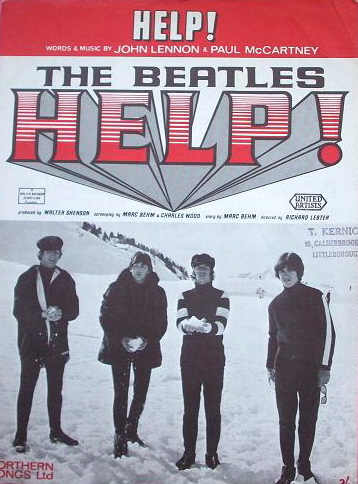 This song being one of a few that he was most proud of, John was very vocal throughout the years in describing what the lyrics meant. In 1970 he explained: “As an artist, I always, in the most real moments, try to express myself, and to show myself and not somebody else. If I knew myself less I could express it less, that’s all. In ‘Strawberry Fields’ I’m saying, ‘No, always think it’s me,’ and all that bit, and ‘Help!’ I was trying to describe myself, how I felt, but I wasn’t sure how I felt. So I’d be saying, ‘Sometimes, no always, think it’s real but…’ but I’m expressing it haltingly because I’m not sure what I’m feeling. But now I was sure: ‘Yeah, that was what I’m feeling – it hurts, that’s what it’s about.’ So then I could express myself.” This song being one of a few that he was most proud of, John was very vocal throughout the years in describing what the lyrics meant. In 1970 he explained: “As an artist, I always, in the most real moments, try to express myself, and to show myself and not somebody else. If I knew myself less I could express it less, that’s all. In ‘Strawberry Fields’ I’m saying, ‘No, always think it’s me,’ and all that bit, and ‘Help!’ I was trying to describe myself, how I felt, but I wasn’t sure how I felt. So I’d be saying, ‘Sometimes, no always, think it’s real but…’ but I’m expressing it haltingly because I’m not sure what I’m feeling. But now I was sure: ‘Yeah, that was what I’m feeling – it hurts, that’s what it’s about.’ So then I could express myself.”
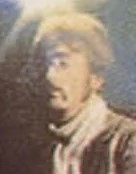 He continues, “’Strawberry Fields’ was psychoanalysis set to music, really. I think most analysis is just symptomatic, where you just talk about yourself. I don’t need to do that because I’ve done a lot of it with reporters. I never had time for psychiatrists and those people, because they’re all cracked. Instead of penting up emotion or pain, feel it – rather than putting it away for a rainy day. I think everyone’s blocked. I haven’t met anybody that isn’t a complete blockage of pain, from childhood, from birth on. Why shouldn’t we cry? They tell us to stop crying about twelve: ‘Be a man.’ What the hell’s that? Men hurt.” He continues, “’Strawberry Fields’ was psychoanalysis set to music, really. I think most analysis is just symptomatic, where you just talk about yourself. I don’t need to do that because I’ve done a lot of it with reporters. I never had time for psychiatrists and those people, because they’re all cracked. Instead of penting up emotion or pain, feel it – rather than putting it away for a rainy day. I think everyone’s blocked. I haven’t met anybody that isn’t a complete blockage of pain, from childhood, from birth on. Why shouldn’t we cry? They tell us to stop crying about twelve: ‘Be a man.’ What the hell’s that? Men hurt.”
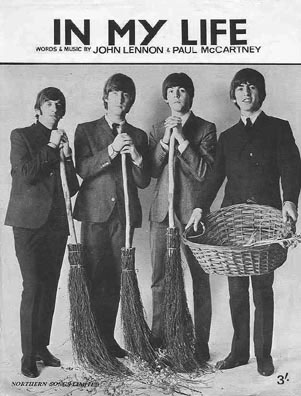 In his 1980 interview with Playboy magazine, John elaborated further: “’Strawberry Fields’ is a real place. It’s a nice name. After I stopped living at Penny Lane, I moved in with my aunt who lived in a nice semi-detached place with a small garden and doctors and lawyers, and all that, all living around. Not the poor, slummy kind of image that was projected in all The Beatles’ stories. Near that home was this Strawberry Fields, a house near a boy’s reformatory where I used to go with my friends Nigel (Whalley) and Pete (Shotton). We would go there and hang out and sell lemonade bottles for a penny. We always had fun at Strawberry Fields, so that’s where I got the name. But I used it as an image. When I was writing ‘In My Life,’ I was trying ‘Penny Lane’ at that time. We were trying to write about Liverpool, and I just listed all the nice-sounding names, just arbitrarily. But, Strawberry Fields, I mean, I have visions of Strawberry Fields…Strawberry Fields is anywhere you want to go.” In his 1980 interview with Playboy magazine, John elaborated further: “’Strawberry Fields’ is a real place. It’s a nice name. After I stopped living at Penny Lane, I moved in with my aunt who lived in a nice semi-detached place with a small garden and doctors and lawyers, and all that, all living around. Not the poor, slummy kind of image that was projected in all The Beatles’ stories. Near that home was this Strawberry Fields, a house near a boy’s reformatory where I used to go with my friends Nigel (Whalley) and Pete (Shotton). We would go there and hang out and sell lemonade bottles for a penny. We always had fun at Strawberry Fields, so that’s where I got the name. But I used it as an image. When I was writing ‘In My Life,’ I was trying ‘Penny Lane’ at that time. We were trying to write about Liverpool, and I just listed all the nice-sounding names, just arbitrarily. But, Strawberry Fields, I mean, I have visions of Strawberry Fields…Strawberry Fields is anywhere you want to go.”
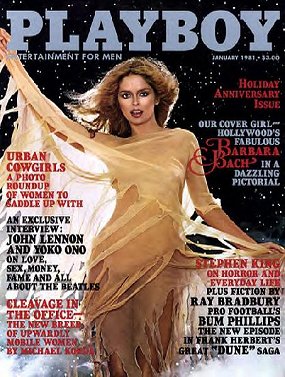 “It’s just about me really,” John continues in Playboy, “or anybody else, who’s thinking like that. It’s pretty straightforward. It’s a bit of messing, let’s get away to Strawberry Fields. Certain parts of the song are fantastic to me, especially when you’re doing it, but then after that; you listen to it objectively. ‘Living is easy…misunderstanding all you see.’ It still goes, doesn’t it? The awareness apparently trying to be expressed. Let’s say, in one way, I was always hip. I was hip in kindergarten. I was different from all the others. I was different all my life.” “It’s just about me really,” John continues in Playboy, “or anybody else, who’s thinking like that. It’s pretty straightforward. It’s a bit of messing, let’s get away to Strawberry Fields. Certain parts of the song are fantastic to me, especially when you’re doing it, but then after that; you listen to it objectively. ‘Living is easy…misunderstanding all you see.’ It still goes, doesn’t it? The awareness apparently trying to be expressed. Let’s say, in one way, I was always hip. I was hip in kindergarten. I was different from all the others. I was different all my life.”
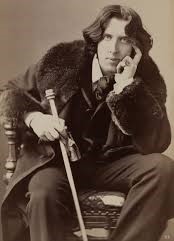 “The second verse goes, ‘No one I think is in my tree,’ well, I was too shy and too doubting. ‘Nobody seems to be as hip as me,’ is what I was saying. Therefore I must be crazy or a genius! ‘I mean it must be high or low,’ the next line. It was scary as a child, because there was nobody to relate to. Neither my auntie nor my friends nor anybody could ever see what I did. It was very, very scary, and about the only contact I had was reading about Oscar Wilde or a Dylan Thomas or a Vincent Van Gogh, all those books that my auntie had talked about their suffering because of their visions. Because of what they saw, they were tortured by society for trying to express what they were. I saw loneliness.” “The second verse goes, ‘No one I think is in my tree,’ well, I was too shy and too doubting. ‘Nobody seems to be as hip as me,’ is what I was saying. Therefore I must be crazy or a genius! ‘I mean it must be high or low,’ the next line. It was scary as a child, because there was nobody to relate to. Neither my auntie nor my friends nor anybody could ever see what I did. It was very, very scary, and about the only contact I had was reading about Oscar Wilde or a Dylan Thomas or a Vincent Van Gogh, all those books that my auntie had talked about their suffering because of their visions. Because of what they saw, they were tortured by society for trying to express what they were. I saw loneliness.”
Even more succinctly, John stated during another interview: “So the line says, ‘No one I think is in my tree, I mean it must be high or low.’ What I’m saying, in my insecure way, is ‘Nobody seems to understand where I’m coming from. I seem to see things in a different way than most people.”
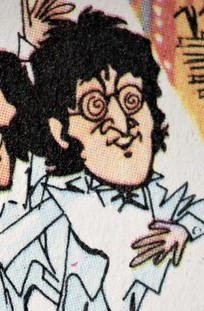 After all of the years that John immersed himself in songwriting, he finally decided to reveal a secret side to himself in “Strawberry Fields Forever” that he sensed all of his life. “There was something wrong with me, I thought, because I seemed to see things other people didn't see. I thought I was crazy or an egomaniac for claiming to see things other people didn't see. I always was so psychic or intuitive or poetic or whatever you want to call it, that I was always seeing things in a hallucinatory way. Surrealism had a great effect on me, because then I realized that the imagery in my mind wasn't insanity; that if it was insane, I belong in an exclusive club that sees the world in those terms. Surrealism to me is reality. Psychic vision to me is reality. Even as a child. When I looked at myself in the mirror or when I was 12, 13, I used to literally trance out into alpha. I didn't know what it was called then. I found out years later there is a name for those conditions. But I would find myself seeing hallucinatory images of my face changing and becoming cosmic and complete. It caused me to always be a rebel. This thing gave me a chip on the shoulder; but, on the other hand, I wanted to be loved and accepted. Part of me would like to be accepted by all facets of society and not be this loudmouthed lunatic musician. But I cannot be what I am not." After all of the years that John immersed himself in songwriting, he finally decided to reveal a secret side to himself in “Strawberry Fields Forever” that he sensed all of his life. “There was something wrong with me, I thought, because I seemed to see things other people didn't see. I thought I was crazy or an egomaniac for claiming to see things other people didn't see. I always was so psychic or intuitive or poetic or whatever you want to call it, that I was always seeing things in a hallucinatory way. Surrealism had a great effect on me, because then I realized that the imagery in my mind wasn't insanity; that if it was insane, I belong in an exclusive club that sees the world in those terms. Surrealism to me is reality. Psychic vision to me is reality. Even as a child. When I looked at myself in the mirror or when I was 12, 13, I used to literally trance out into alpha. I didn't know what it was called then. I found out years later there is a name for those conditions. But I would find myself seeing hallucinatory images of my face changing and becoming cosmic and complete. It caused me to always be a rebel. This thing gave me a chip on the shoulder; but, on the other hand, I wanted to be loved and accepted. Part of me would like to be accepted by all facets of society and not be this loudmouthed lunatic musician. But I cannot be what I am not."
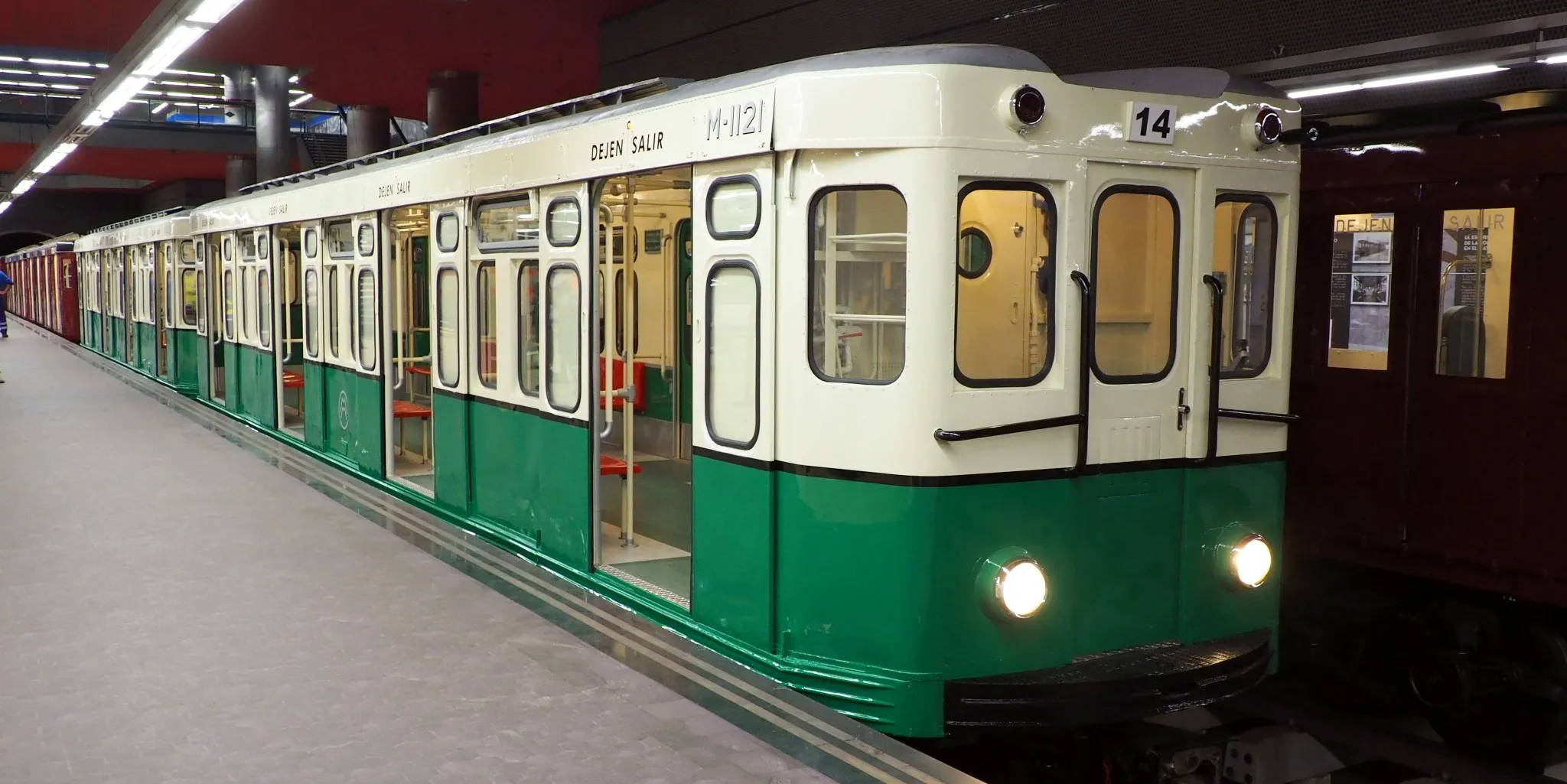 Michael Crawford adds what he feels might have been John’s inspiration for the thundering conclusion to the song. “I’m sure that John used the sound of the night train to Madrid or something similar on ‘Strawberry Fields Forever.’ John was the first to catch the night train to Madrid, as he was away two days before us. But the end of the recording certainly reminded me of the last train to Madrid. John always said he was going to write a song about that train.” Michael Crawford adds what he feels might have been John’s inspiration for the thundering conclusion to the song. “I’m sure that John used the sound of the night train to Madrid or something similar on ‘Strawberry Fields Forever.’ John was the first to catch the night train to Madrid, as he was away two days before us. But the end of the recording certainly reminded me of the last train to Madrid. John always said he was going to write a song about that train.”
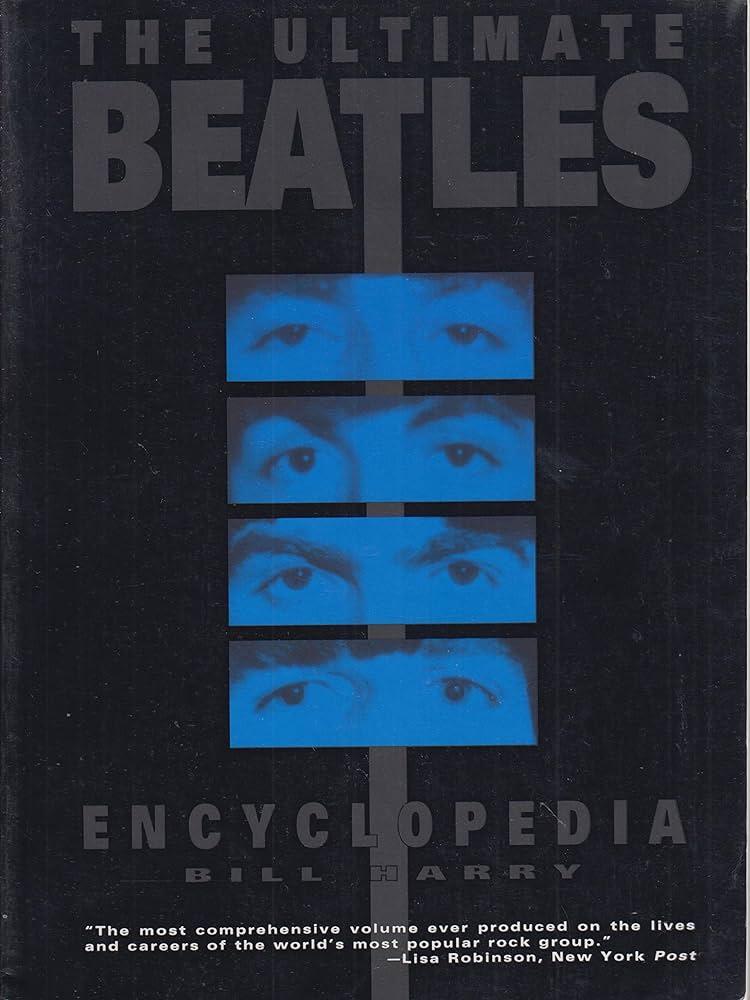 As for the actual Strawberry Fields, it is described in Bill Harry’s “The Ultimate Beatles Encyclopedia” as “a children’s community home run by the Salvation Army at Beaconsfield Road, Woolton, Liverpool L25 6LJ. It is very close to where John lived as a child and he often used to wander in Strawberry Fields and attended summer fetes in its grounds. The home now has a special unit called Lennon Court which can accommodate four children.” Unfortunately, Strawberry Fields closed in 2005, prompting a former employee to comment to the media, “So much for ‘Strawberry Fields Forever!” As for the actual Strawberry Fields, it is described in Bill Harry’s “The Ultimate Beatles Encyclopedia” as “a children’s community home run by the Salvation Army at Beaconsfield Road, Woolton, Liverpool L25 6LJ. It is very close to where John lived as a child and he often used to wander in Strawberry Fields and attended summer fetes in its grounds. The home now has a special unit called Lennon Court which can accommodate four children.” Unfortunately, Strawberry Fields closed in 2005, prompting a former employee to comment to the media, “So much for ‘Strawberry Fields Forever!”
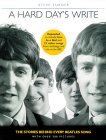 Steve Turner’s book “A Hard Day’s Write” adds these details about this location: “Strawberry Field was a large Victorian building with extensive wooded grounds in Beconsfield Road, a five-minute walk from John’s home in Menlove Avenue. Since 1936, it had been a children’s home with an annual fete, which Aunt Mimi regularly took him to. The gothic grandeur of the building and the mystery of the woods fascinated John. He recognized it as a place where he could be alone and let his imagination run free. He soon discovered that there was a more direct route from his garden into the grounds and it became one of his places of escape.” Steve Turner’s book “A Hard Day’s Write” adds these details about this location: “Strawberry Field was a large Victorian building with extensive wooded grounds in Beconsfield Road, a five-minute walk from John’s home in Menlove Avenue. Since 1936, it had been a children’s home with an annual fete, which Aunt Mimi regularly took him to. The gothic grandeur of the building and the mystery of the woods fascinated John. He recognized it as a place where he could be alone and let his imagination run free. He soon discovered that there was a more direct route from his garden into the grounds and it became one of his places of escape.”
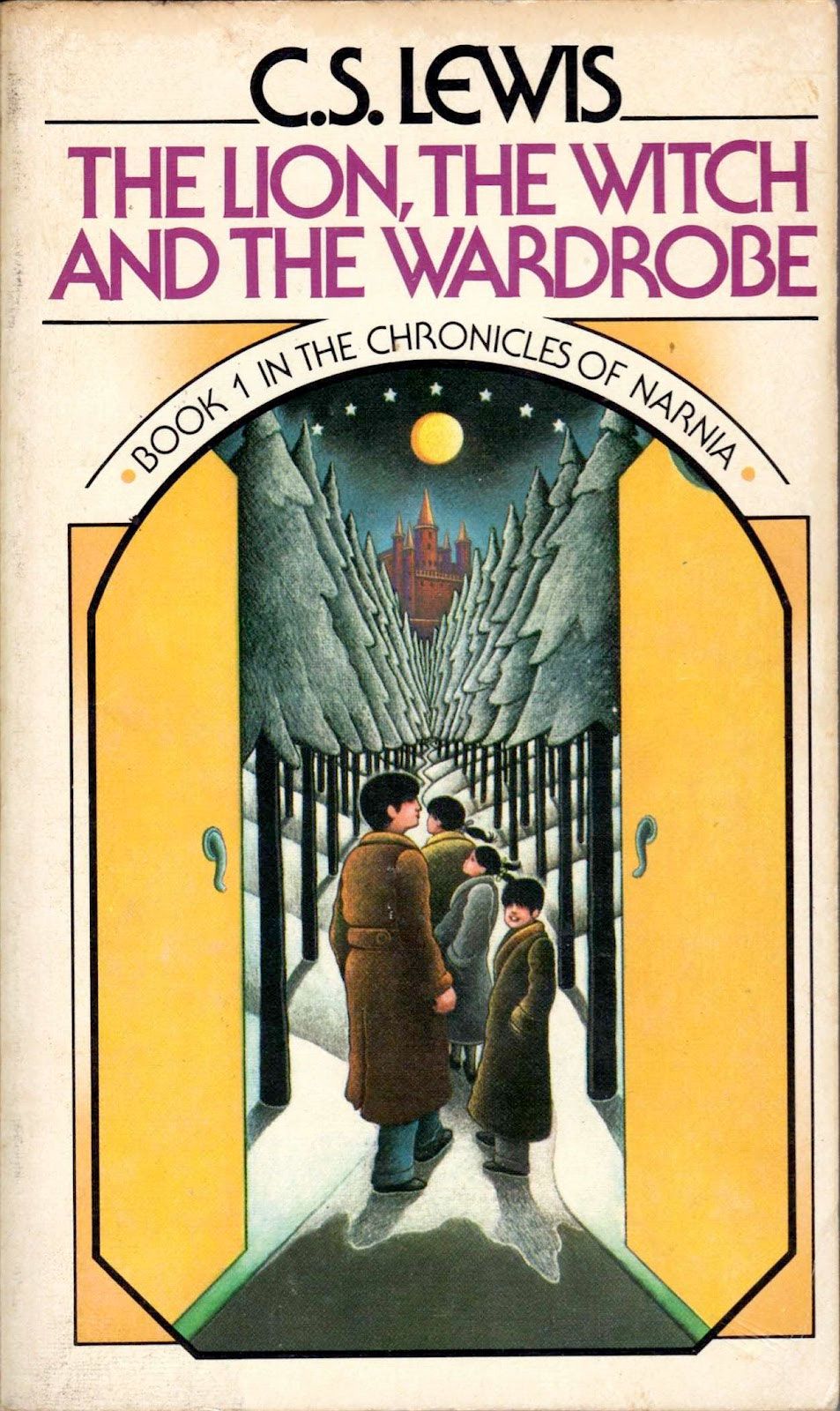 “I’ve seen Strawberry Fields described as a dull, grimy place next door to him that John imagined to be a beautiful place,” related Paul in his book “Many Years From Now,” “but in the summer it wasn’t dull and grimy at all: it was a secret garden. John’s memory of it wasn’t to do with the fact that it was a Salvation Army home; that was up at the house. There was a wall you could bunk over and it was a rather wild garden, it wasn’t manicured at all, so it was easy to hide in. The bit he went into was a secret garden like in ‘The Lion, The Witch And The Wardrobe’ and he thought of it like that, it was a little hide-away for him where he could maybe have a smoke, live in his dreams a little, so it was a get-away. It was an escape for John.” “I’ve seen Strawberry Fields described as a dull, grimy place next door to him that John imagined to be a beautiful place,” related Paul in his book “Many Years From Now,” “but in the summer it wasn’t dull and grimy at all: it was a secret garden. John’s memory of it wasn’t to do with the fact that it was a Salvation Army home; that was up at the house. There was a wall you could bunk over and it was a rather wild garden, it wasn’t manicured at all, so it was easy to hide in. The bit he went into was a secret garden like in ‘The Lion, The Witch And The Wardrobe’ and he thought of it like that, it was a little hide-away for him where he could maybe have a smoke, live in his dreams a little, so it was a get-away. It was an escape for John.”
 “’Strawberry Fields’ was entirely a John composition,” relates producer George Martin. However, while the arrangement was being fleshed out in the recording studio, it was Paul that came up with the distinctive melody line heard in the introduction which he played on the Mellotron. “’Strawberry Fields’ was entirely a John composition,” relates producer George Martin. However, while the arrangement was being fleshed out in the recording studio, it was Paul that came up with the distinctive melody line heard in the introduction which he played on the Mellotron.
Recording History
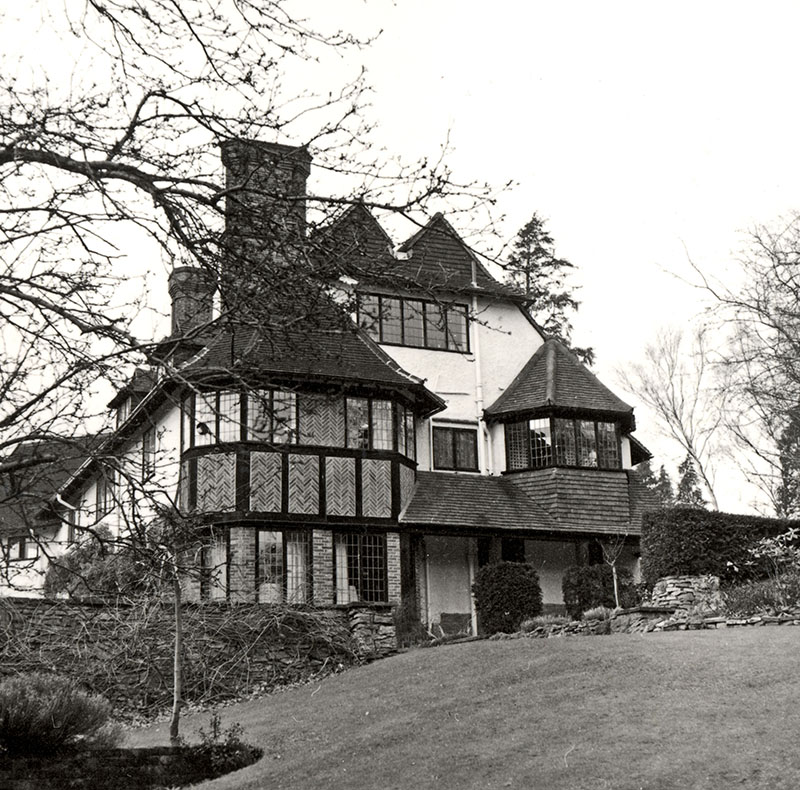 The first recordings of the song, as mentioned above, took place between September 26th and November 6th, 1966, while John was filming the movie “How I Won The War” in Almeria, Spain. After his return home, he continued a series of demo recordings at his Kenwood residence to nail down more of the arrangement of the tune. These recordings include single guitar demos and even attempts at overdubbing other instruments himself (guitars and then keyboards) and double-tracking his vocals. A sample of these Kenwood recordings is included in the 1996 “Anthology 2” album, which some suggest resembles Bob Dylan's song “It's All Over Now, Baby Blue,” as well as on the 2006 released album “Love.” The first recordings of the song, as mentioned above, took place between September 26th and November 6th, 1966, while John was filming the movie “How I Won The War” in Almeria, Spain. After his return home, he continued a series of demo recordings at his Kenwood residence to nail down more of the arrangement of the tune. These recordings include single guitar demos and even attempts at overdubbing other instruments himself (guitars and then keyboards) and double-tracking his vocals. A sample of these Kenwood recordings is included in the 1996 “Anthology 2” album, which some suggest resembles Bob Dylan's song “It's All Over Now, Baby Blue,” as well as on the 2006 released album “Love.”
Having finalized the arrangement, John debuted the song in EMI Studio Two on November 24th, 1966, just over five months since the group's last recording session. This session began around 7 pm but, since they had hardly been in each other's company as a foursome for months, a lax atmosphere ensued with much conversation taking up a good portion of time.
 Engineer Geoff Emerick related many of the details in his book “Here, There And Everywhere.” “It had been five months since I'd last seen the group, but it might as well have been five years. For one thing, they all looked so different. Garbed in colorful clothes and sporting trendy mustaches, George Harrison even had a beard, they were utterly hip, the epitome of swinging London circa 1966. John was the one who had changed the most: having shed the excess weight he had put on during the 'Revolver' sessions, he was trim, almost gaunt, and he was wearing granny glasses instead of the thick horn-rimmed National Health spectacles I was used to seeing. He also had very short, distincly non-Beatlish hair.” Engineer Geoff Emerick related many of the details in his book “Here, There And Everywhere.” “It had been five months since I'd last seen the group, but it might as well have been five years. For one thing, they all looked so different. Garbed in colorful clothes and sporting trendy mustaches, George Harrison even had a beard, they were utterly hip, the epitome of swinging London circa 1966. John was the one who had changed the most: having shed the excess weight he had put on during the 'Revolver' sessions, he was trim, almost gaunt, and he was wearing granny glasses instead of the thick horn-rimmed National Health spectacles I was used to seeing. He also had very short, distincly non-Beatlish hair.”
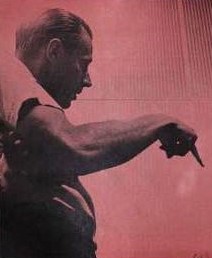 “It was our first night back in the studio, and we were huddled around the mixing console, discussing how we wanted to approach the new album...John Lennon was even more agitated than usual. 'Look,' he said to George Martin, 'it's really quite simple. We're fed up with making soft music for soft people, and we're fed up with playing for them, too. But it has given us a fresh start, don't you see?' From the expression on his face, it was quite clear that George Martin didn't see. 'We can't hear ourselves onstage anymore for all of the screaming,' Paul interjected earnestly, 'so what's the point? We did try performing some songs off the last album, but there are so many complicated overdubs we can't do them justice. Now we can record anything we want, and it won't matter. And what we want is to raise the bar a notch, to make our best album ever.'...Lennon persisted, talking rapid-fire – a sure sign that he was starting to get annoyed. 'What we're saying is, if we don't have to tour, then we can record music that we won't ever have to play live, and that means we can create something that's never been heard before: a new kind of record with new kinds of sounds.'” “It was our first night back in the studio, and we were huddled around the mixing console, discussing how we wanted to approach the new album...John Lennon was even more agitated than usual. 'Look,' he said to George Martin, 'it's really quite simple. We're fed up with making soft music for soft people, and we're fed up with playing for them, too. But it has given us a fresh start, don't you see?' From the expression on his face, it was quite clear that George Martin didn't see. 'We can't hear ourselves onstage anymore for all of the screaming,' Paul interjected earnestly, 'so what's the point? We did try performing some songs off the last album, but there are so many complicated overdubs we can't do them justice. Now we can record anything we want, and it won't matter. And what we want is to raise the bar a notch, to make our best album ever.'...Lennon persisted, talking rapid-fire – a sure sign that he was starting to get annoyed. 'What we're saying is, if we don't have to tour, then we can record music that we won't ever have to play live, and that means we can create something that's never been heard before: a new kind of record with new kinds of sounds.'”
 “George Martin called an end to the informal conference. 'Right, then, let's get to work. What have you got for me?' Paul started to say something, but before he could answer, John shouted out, 'I've got a good one, for a starter!' John could talk over most anyone if he wanted to, and he was never shy about jumping the queue; in fact, the first session for almost every Beatles album was devoted to recording one of his songs. A half smile played across Paul's face as he shrugged his shoulders, backing down gracefully.” “George Martin called an end to the informal conference. 'Right, then, let's get to work. What have you got for me?' Paul started to say something, but before he could answer, John shouted out, 'I've got a good one, for a starter!' John could talk over most anyone if he wanted to, and he was never shy about jumping the queue; in fact, the first session for almost every Beatles album was devoted to recording one of his songs. A half smile played across Paul's face as he shrugged his shoulders, backing down gracefully.”
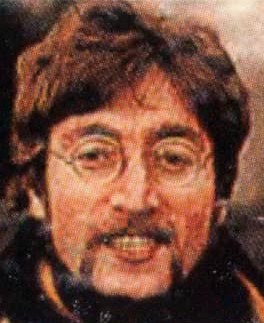 Geoff Emerick continues, “Phil McDonald (2nd engineer) and I strained to hear what was going on downstairs. Down in the studio, George Martin was perched, as usual, on his high stool, positioned in the midst of the four Beatles. John was standing directly in front of him, playing an acoustic guitar and singing softly. Because he wasn't close to any of the microphones we had arranged around the room, I had to push the faders up quite high to hear him. From the very first note, it was obvious that this new Lennon song was a masterpiece. He had created a gentle, almost mystical tribute to some mysterious place, a place he called 'Strawberry Fields.' I had no idea what the lyric was about, but the words were compelling, like abstract poetry, and there was something magical in the spooky, detached timbre of John's voice.” Geoff Emerick continues, “Phil McDonald (2nd engineer) and I strained to hear what was going on downstairs. Down in the studio, George Martin was perched, as usual, on his high stool, positioned in the midst of the four Beatles. John was standing directly in front of him, playing an acoustic guitar and singing softly. Because he wasn't close to any of the microphones we had arranged around the room, I had to push the faders up quite high to hear him. From the very first note, it was obvious that this new Lennon song was a masterpiece. He had created a gentle, almost mystical tribute to some mysterious place, a place he called 'Strawberry Fields.' I had no idea what the lyric was about, but the words were compelling, like abstract poetry, and there was something magical in the spooky, detached timbre of John's voice.”
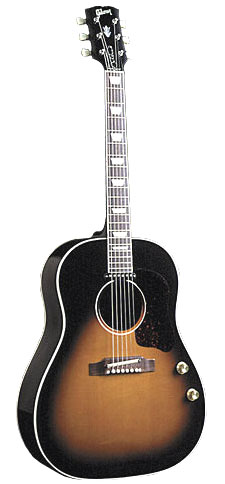 “When he finished, there was a moment of stunned silence, broken by Paul, who in a quiet, respectful tone said simply, 'That is absolutely brilliant.' Most of the time when Lennon played one of his songs through for the first time on acoustic guitar, we'd all think, 'Wow, that's great,' but this song was clearly something special. 'I've brought a demo tape of the song with me, too,' John said, offering to play it, but everyone agreed there was no need – they wanted to get straight into recording. The energy in the room was staggering: it was almost as if the band's creative energies had been bottled up for too long.” “When he finished, there was a moment of stunned silence, broken by Paul, who in a quiet, respectful tone said simply, 'That is absolutely brilliant.' Most of the time when Lennon played one of his songs through for the first time on acoustic guitar, we'd all think, 'Wow, that's great,' but this song was clearly something special. 'I've brought a demo tape of the song with me, too,' John said, offering to play it, but everyone agreed there was no need – they wanted to get straight into recording. The energy in the room was staggering: it was almost as if the band's creative energies had been bottled up for too long.”
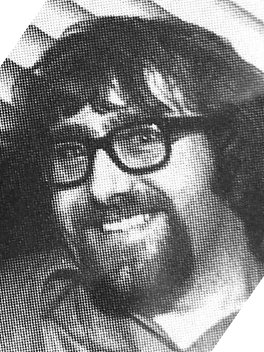 The Beatles then began to put their heads together to create an appropriate arrangement for the song. George Harrison began working out some “long, Hawaiian-style swoops,” as Geoff Emerick referred to them, that John wanted in strategic places. (You can hear John himself experimenting with this on the demos of the song he made in his Kenwood music room.) A new instrument was brought into the studio on this day by Mal Evans, this being a Mellotron that he transported from John's Weybridge home. It was a keyboard John acquired in the summer of 1965 but had brought into the studio for the first time on this day. John described it as “a machine some guy in Britain invented, and it had tape loops on jazz bands, trumpets, flutes and rhythm sections on it.” Geoff Emerick described it as “a cumbersome keyboard in a polished wood cabinet...each key triggered a tape loop of a real instrument playing the equivalent note. There were three sets of tape loops installed, so you could have flutes, strings, or choir at the touch of a button.” The Beatles then began to put their heads together to create an appropriate arrangement for the song. George Harrison began working out some “long, Hawaiian-style swoops,” as Geoff Emerick referred to them, that John wanted in strategic places. (You can hear John himself experimenting with this on the demos of the song he made in his Kenwood music room.) A new instrument was brought into the studio on this day by Mal Evans, this being a Mellotron that he transported from John's Weybridge home. It was a keyboard John acquired in the summer of 1965 but had brought into the studio for the first time on this day. John described it as “a machine some guy in Britain invented, and it had tape loops on jazz bands, trumpets, flutes and rhythm sections on it.” Geoff Emerick described it as “a cumbersome keyboard in a polished wood cabinet...each key triggered a tape loop of a real instrument playing the equivalent note. There were three sets of tape loops installed, so you could have flutes, strings, or choir at the touch of a button.”
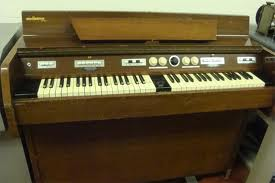 The model was a “Mellotron Mark II,” as described by Andy Babiuk in his 2001 book “Beatles Gear,” he adding that John “finally found the time to experiment with the tape-replay instrument as he looked for a way to include its distinctive sounds...Ironically, it was McCartney who played the Mellotron on the recording.” Geoff Emerick continues: “It was Paul, as usual, who discovered the musical potential instead of just the novelty value...Within a remarkably short time, he'd worked out an arrangement that beautifully complemented Lennon's haunting vocal line. The model was a “Mellotron Mark II,” as described by Andy Babiuk in his 2001 book “Beatles Gear,” he adding that John “finally found the time to experiment with the tape-replay instrument as he looked for a way to include its distinctive sounds...Ironically, it was McCartney who played the Mellotron on the recording.” Geoff Emerick continues: “It was Paul, as usual, who discovered the musical potential instead of just the novelty value...Within a remarkably short time, he'd worked out an arrangement that beautifully complemented Lennon's haunting vocal line.
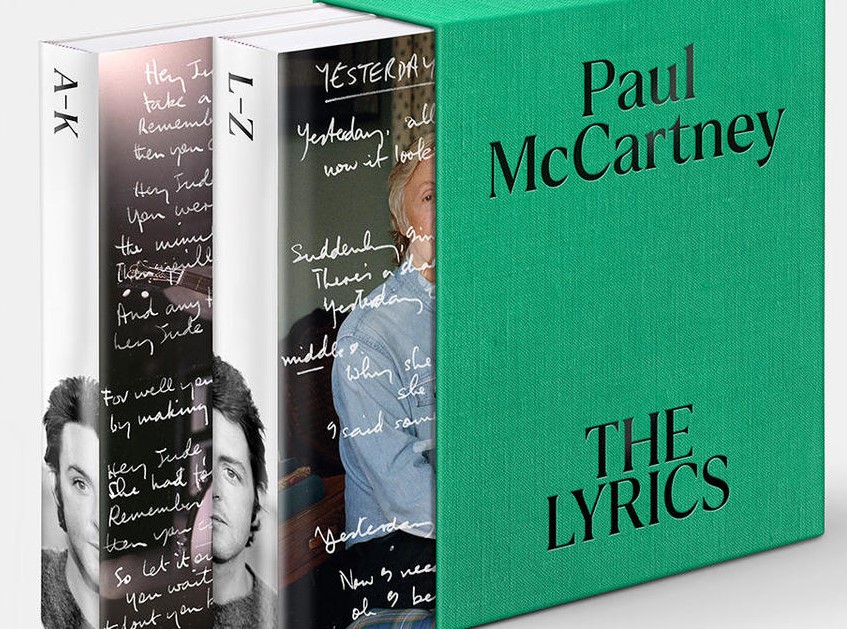 In his 2021 book "The Lyrics," McCartney described the Mellotron as "a tape sample playback keyboard that The Beatles had used back in the mid sixties on 'Strawberry Fields Forever.' I remember being in Abbey Road, and we were introduced to this big, grey Mellotron that looked like something out of wartime, although this was spanking new...(EMI) put this Mellotron in the middle of Studio Two for our use, and we all went, 'Ooh.' We were all over it. 'Wow, amazing!' So that was fascinating, just seeing if we could use it in our songs. We were always looking for new sounds and elements." Paul here claims that EMI Studios supplied the Mellotron and not Lennon, but either way, this innovative new instrument was now at their disposal. In his 2021 book "The Lyrics," McCartney described the Mellotron as "a tape sample playback keyboard that The Beatles had used back in the mid sixties on 'Strawberry Fields Forever.' I remember being in Abbey Road, and we were introduced to this big, grey Mellotron that looked like something out of wartime, although this was spanking new...(EMI) put this Mellotron in the middle of Studio Two for our use, and we all went, 'Ooh.' We were all over it. 'Wow, amazing!' So that was fascinating, just seeing if we could use it in our songs. We were always looking for new sounds and elements." Paul here claims that EMI Studios supplied the Mellotron and not Lennon, but either way, this innovative new instrument was now at their disposal.
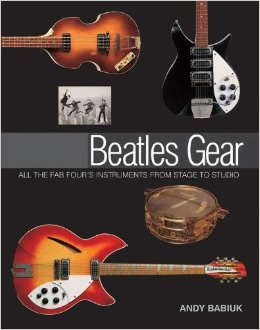 Geoff Emerick recalled that “several hours” were needed for the group to write and rehearse an arrangement for the song, Ringo even “arranging towels over his snare drum and tom-toms in order to give them a distinctive muffled tone.” As for the Mellotron, Paul chose the “brass” setting which he thought would work nicely in the arrangement, which was, as stated in the book “Beatles Gear,” “a recording of close-miked trumpet, trombone and saxophone.” Geoff Emerick recalled that “several hours” were needed for the group to write and rehearse an arrangement for the song, Ringo even “arranging towels over his snare drum and tom-toms in order to give them a distinctive muffled tone.” As for the Mellotron, Paul chose the “brass” setting which he thought would work nicely in the arrangement, which was, as stated in the book “Beatles Gear,” “a recording of close-miked trumpet, trombone and saxophone.”
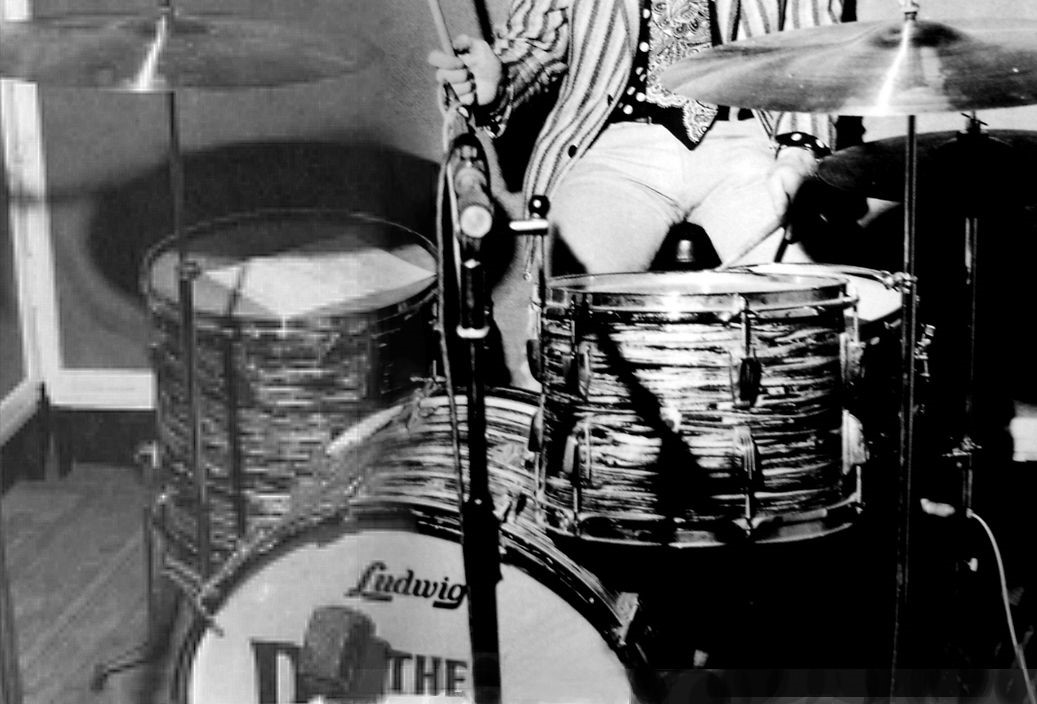 With the tape rolling at “53 cycles per second so that it sounded faster on replay” (according to Mark Lewisohn's 1988 book “The Beatles Recording Sessions”), the band recorded "take one" of the song. The rhythm track consisted of John on rhythm guitar, Paul on Mellotron, George on slide guitar and Ringo on muffled drums. Overdubs consisted of John's stunning lead vocal, which he then double-tracked in spots, and vocal harmonies by John, Paul and George. (No maracas can be heard on the recording as indicated in the "Recording Sessions" book.) With the tape rolling at “53 cycles per second so that it sounded faster on replay” (according to Mark Lewisohn's 1988 book “The Beatles Recording Sessions”), the band recorded "take one" of the song. The rhythm track consisted of John on rhythm guitar, Paul on Mellotron, George on slide guitar and Ringo on muffled drums. Overdubs consisted of John's stunning lead vocal, which he then double-tracked in spots, and vocal harmonies by John, Paul and George. (No maracas can be heard on the recording as indicated in the "Recording Sessions" book.)
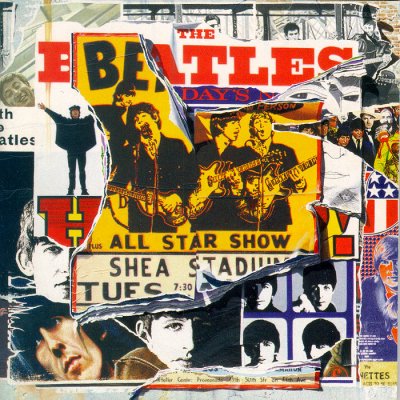 As gorgeous as this recording was, it was apparent that it could easily be improved upon, especially because of George's jarring slide guitar parts and Paul's Mellotron flubs at the song's conclusion. The session ended at 2:30 am the following morning with a general idea of what could be done with the song but nothing releasable as of yet. This recording, however, did finally see an official release on the compilation album “Anthology 2," as well as the "Super Deluxe Edition" box set of the "Sgt. Pepper" album,” minus John's double-tracked vocals as well as the harmony vocals. A portion of this recording was also used in the mash-up of the song used on the album “Love,” this time with the harmony vocals and some of John's double-tracked vocals restored. As gorgeous as this recording was, it was apparent that it could easily be improved upon, especially because of George's jarring slide guitar parts and Paul's Mellotron flubs at the song's conclusion. The session ended at 2:30 am the following morning with a general idea of what could be done with the song but nothing releasable as of yet. This recording, however, did finally see an official release on the compilation album “Anthology 2," as well as the "Super Deluxe Edition" box set of the "Sgt. Pepper" album,” minus John's double-tracked vocals as well as the harmony vocals. A portion of this recording was also used in the mash-up of the song used on the album “Love,” this time with the harmony vocals and some of John's double-tracked vocals restored.
 Four days later, on November 28th, 1966, The Beatles returned to EMI Studio Two at around 7 pm for another attempt at recording “Strawberry Fields Forever.” With the same team of George Martin, Geoff Emerick and Phil McDonald at the controls, they started from scratch, discounting entirely the recording they labored over just a few days before. Four days later, on November 28th, 1966, The Beatles returned to EMI Studio Two at around 7 pm for another attempt at recording “Strawberry Fields Forever.” With the same team of George Martin, Geoff Emerick and Phil McDonald at the controls, they started from scratch, discounting entirely the recording they labored over just a few days before.
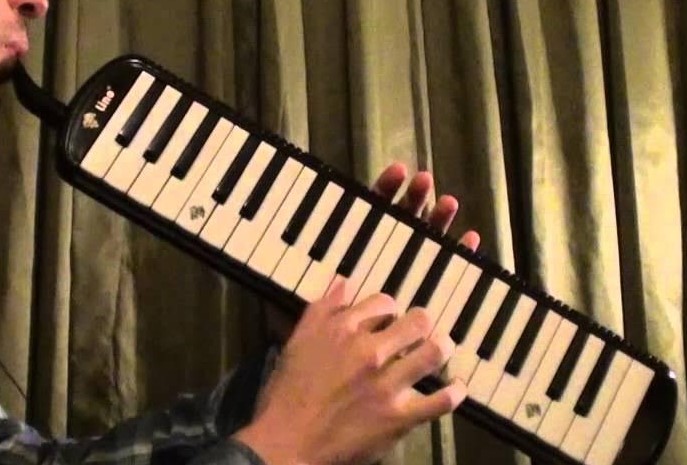 “The big break-through that night,” according to Geoff Emerick, “was Paul's coming up with the stunning Mellotron line that opens the song. Paul's inspiration really set the stage.” However, if you observe closely a particular scene in the Beatles movie “The First US Visit,” a film that candidly documents the group in February of 1964, John can be heard playing on a Melodion what uncannily seems to be the opening notes of what now became the Mellotron introduction to “Strawberry Fields” as played by Paul. “The big break-through that night,” according to Geoff Emerick, “was Paul's coming up with the stunning Mellotron line that opens the song. Paul's inspiration really set the stage.” However, if you observe closely a particular scene in the Beatles movie “The First US Visit,” a film that candidly documents the group in February of 1964, John can be heard playing on a Melodion what uncannily seems to be the opening notes of what now became the Mellotron introduction to “Strawberry Fields” as played by Paul.
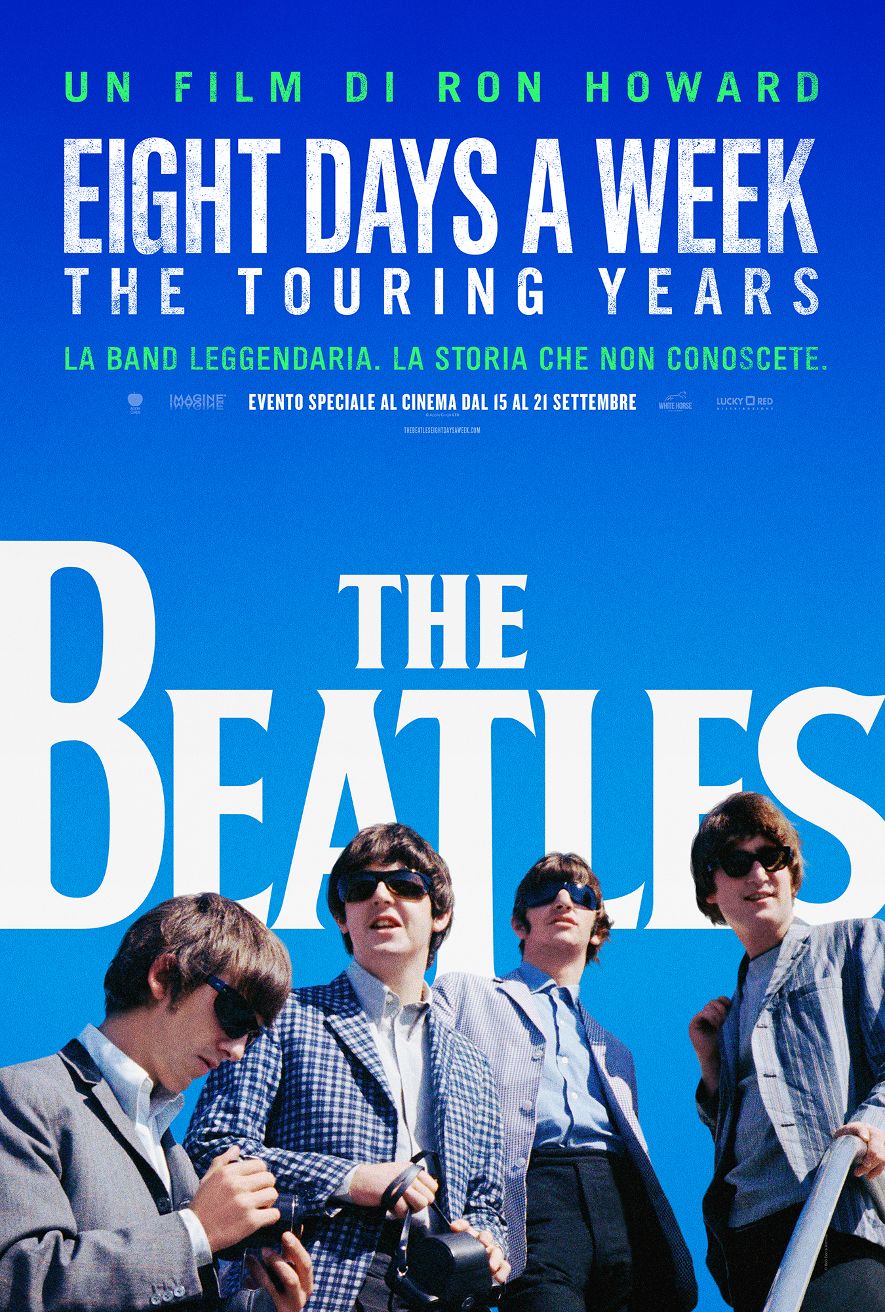 Had this introduction “been in John's head for years,” as insinuated by Bruce Spizer in his book “The Beatles' Story On Capitol Records – Part One,” or was it just an eerie coincidence? This small segment of film was more recently included in the 2016 Documentary film "Eight Days A Week - The Touring Years." Look it up – it's worth a listen. Had this introduction “been in John's head for years,” as insinuated by Bruce Spizer in his book “The Beatles' Story On Capitol Records – Part One,” or was it just an eerie coincidence? This small segment of film was more recently included in the 2016 Documentary film "Eight Days A Week - The Touring Years." Look it up – it's worth a listen.
There were also many changes to the arrangement on this day in the studio, including the sequence of the verses and choruses. After the Mellotron introduction, which was now on the "flute" setting, we go straight to the chorus and then to the first two verses in a row. After a repeat of the chorus, the third verse is heard before the chorus is repeated one more time. Then they go into an instrumental version of another verse which was intended to be faded out.
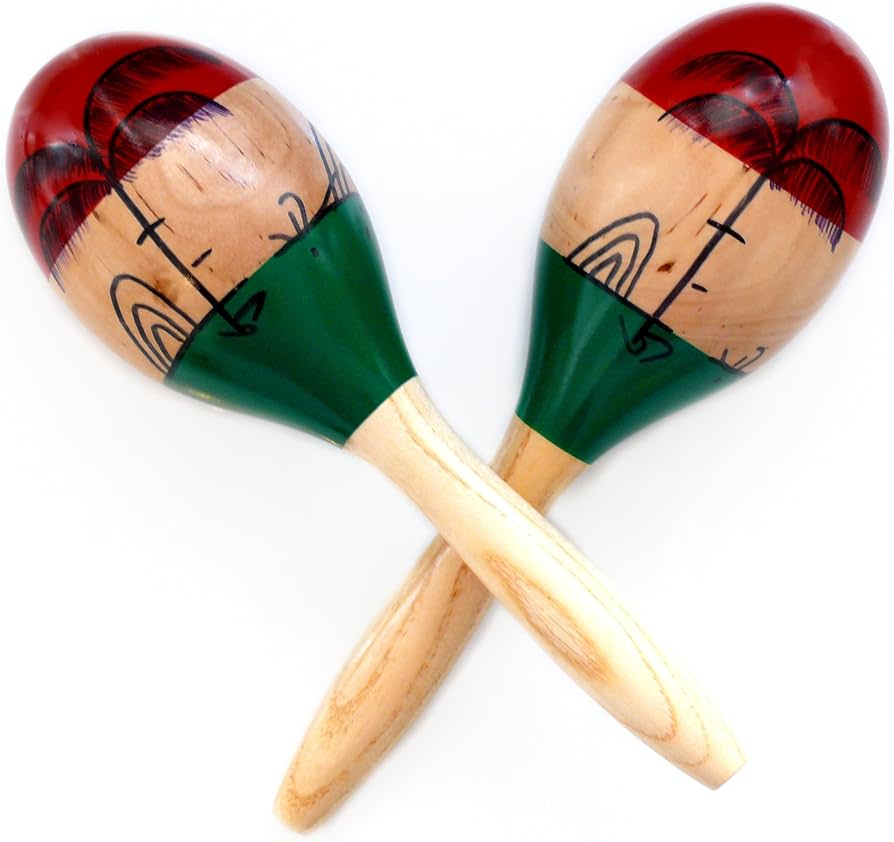 Three takes were recorded of the rhythm track on this day, numbered two through four. The instrumentation was John on guitar, Paul on Mellotron, Ringo on drums and George on maracas. “Take two” nearly made it through to the end but was deemed unusable even more so by John coming in late with his guitar parts on many occasions (as well as some McCartney Mellotron flubs). “Take three” didn't get past the Mellotron introduction as John comes in complaining about it being too “loud.” Three takes were recorded of the rhythm track on this day, numbered two through four. The instrumentation was John on guitar, Paul on Mellotron, Ringo on drums and George on maracas. “Take two” nearly made it through to the end but was deemed unusable even more so by John coming in late with his guitar parts on many occasions (as well as some McCartney Mellotron flubs). “Take three” didn't get past the Mellotron introduction as John comes in complaining about it being too “loud.”
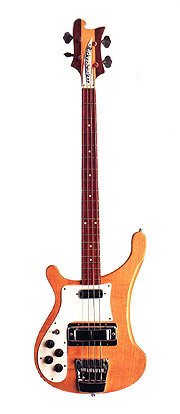 “Take four” made it through to the end of the song and, although still having noticeable flubs by both John and Paul, it proved to be suitable enough for adding overdubs. John added a slightly sped-up lead vocal (which sounded somewhat "dragged out" when played back at regular speed), Paul added bass, and George replicated his guitar “swoops” on the Mellotron using the "electric guitar" setting while manipulating the pitch bend feature whenever the lyrics "going to" are heard in the choruses. Interestingly, using this Mellotron setting created a Morse code-like beeping sound which can be heard on these takes as well as on the finished song. This overdubbed “Take four” was then given three rough mono mixes at the end of the day for acetate cutting purposes. By 1:30 am the next morning, the session was complete and the group left for the night to mull over whether this version was suitable enough to be the finished version. We should remember though, as Mark Lewisohn states in “The Beatles Recording Sessions,” “For the first time there was no real pressure on The Beatles to deliver a product to a preset deadline. They could, and would, work on a song until they and only they were satisfied with it, irrespective of time." This version, "take four," did eventually get an official release on the "Super Deluxe Edition" of the "Sgt. Pepper" album in 2017. “Take four” made it through to the end of the song and, although still having noticeable flubs by both John and Paul, it proved to be suitable enough for adding overdubs. John added a slightly sped-up lead vocal (which sounded somewhat "dragged out" when played back at regular speed), Paul added bass, and George replicated his guitar “swoops” on the Mellotron using the "electric guitar" setting while manipulating the pitch bend feature whenever the lyrics "going to" are heard in the choruses. Interestingly, using this Mellotron setting created a Morse code-like beeping sound which can be heard on these takes as well as on the finished song. This overdubbed “Take four” was then given three rough mono mixes at the end of the day for acetate cutting purposes. By 1:30 am the next morning, the session was complete and the group left for the night to mull over whether this version was suitable enough to be the finished version. We should remember though, as Mark Lewisohn states in “The Beatles Recording Sessions,” “For the first time there was no real pressure on The Beatles to deliver a product to a preset deadline. They could, and would, work on a song until they and only they were satisfied with it, irrespective of time." This version, "take four," did eventually get an official release on the "Super Deluxe Edition" of the "Sgt. Pepper" album in 2017.
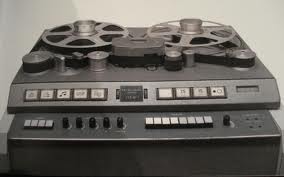 After a good night's rest, The Beatles reconvened at EMI Studio Two at 2:30 pm the following day, November 29th, to once again re-record “Strawberry Fields Forever.” George Martin apparently decided to record them rehearsing the song for a while, rewinding the tape periodically to record over these run-thoughs. When it appeared that they were ready to record a proper take, George Martin had the tape rewound again to record over the rehearsals. After a good night's rest, The Beatles reconvened at EMI Studio Two at 2:30 pm the following day, November 29th, to once again re-record “Strawberry Fields Forever.” George Martin apparently decided to record them rehearsing the song for a while, rewinding the tape periodically to record over these run-thoughs. When it appeared that they were ready to record a proper take, George Martin had the tape rewound again to record over the rehearsals.
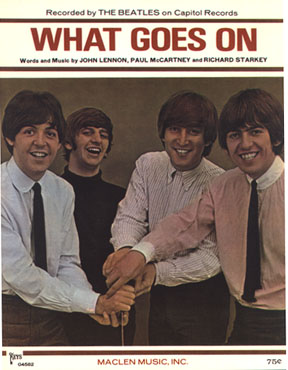 Just after one of the engineers calls out “Take five,” we hear Paul and John still rehearsing their Mellotron and guitar parts. Paul finalizes the melody line he's going to play for the introduction of the song so as to sound exactly as we're all used to hearing it, this rehearsal being committed to tape at this point. “Take five” turns out to be only a false start, not getting past the Mellotron introduction. “Take six” follows very shortly afterwards, this amounting to an almost identical rhythm track as performed the day before. It once again consists of John on electric guitar, Paul on Mellotron, Ringo on drums and George on maracas. This take made it through to the completion of the song and was deemed best. Interestingly, after this take wound down, the tape was stopped, revealing segments of rehearsals of the song that it had recorded over. We immediately hear the end of a rehearsal that humorously went into double-time, sounding not unlike the rhythm track to their song “What Goes On.” After the tape cuts this off, we hear yet another quick snippet of a rehearsal that only lasts a moment or two. Just after one of the engineers calls out “Take five,” we hear Paul and John still rehearsing their Mellotron and guitar parts. Paul finalizes the melody line he's going to play for the introduction of the song so as to sound exactly as we're all used to hearing it, this rehearsal being committed to tape at this point. “Take five” turns out to be only a false start, not getting past the Mellotron introduction. “Take six” follows very shortly afterwards, this amounting to an almost identical rhythm track as performed the day before. It once again consists of John on electric guitar, Paul on Mellotron, Ringo on drums and George on maracas. This take made it through to the completion of the song and was deemed best. Interestingly, after this take wound down, the tape was stopped, revealing segments of rehearsals of the song that it had recorded over. We immediately hear the end of a rehearsal that humorously went into double-time, sounding not unlike the rhythm track to their song “What Goes On.” After the tape cuts this off, we hear yet another quick snippet of a rehearsal that only lasts a moment or two.
 Overdubs then began, John adding his lead vocal and Paul adding bass guitar to “Take six.” Then, a tape reduction was made of “Take six,” this becoming “Take seven,” allowing more tracks on the four-track machine for overdubbing. According to Kevin Howlett's liner notes in the 50th Anniversary release of the "Sgt. Pepper" album, they mixed all of the instruments recorded so far onto track one of the new tape and John's vocals onto track three. Onto track two of the tape was overdubbed what Kevin Howlett describes as "mellotron generated guitar and piano sounds," thus referring to George's Mellotron using the "electric guitar" setting, while John double-tracked his vocals on track four. Overdubs then began, John adding his lead vocal and Paul adding bass guitar to “Take six.” Then, a tape reduction was made of “Take six,” this becoming “Take seven,” allowing more tracks on the four-track machine for overdubbing. According to Kevin Howlett's liner notes in the 50th Anniversary release of the "Sgt. Pepper" album, they mixed all of the instruments recorded so far onto track one of the new tape and John's vocals onto track three. Onto track two of the tape was overdubbed what Kevin Howlett describes as "mellotron generated guitar and piano sounds," thus referring to George's Mellotron using the "electric guitar" setting, while John double-tracked his vocals on track four.
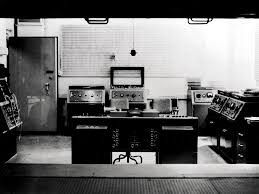 It appeared that the song was now complete. Therefore, three more mono mixes of the song were made in the control room of EMI Studio Two by the engineering team of George Martin, Geoff Emerick and Phil McDonald, the third of these mixes being used to cut four acetate discs, one for each of The Beatles. This version of the song is heard on the 1996 compilation "Anthology 2" as well as some releases of the 50th Anniversary edition of "Sgt. Pepper." “All in all, three long sessions were devoted to recording that one track,” remembers Geoff Emerick, “which seemed like a lot at the time. John seemed to be having a lot of trouble making up his mind about how he wanted the song recorded, but...it was deemed finished.” At 8 pm that evening, the session was over. It appeared that the song was now complete. Therefore, three more mono mixes of the song were made in the control room of EMI Studio Two by the engineering team of George Martin, Geoff Emerick and Phil McDonald, the third of these mixes being used to cut four acetate discs, one for each of The Beatles. This version of the song is heard on the 1996 compilation "Anthology 2" as well as some releases of the 50th Anniversary edition of "Sgt. Pepper." “All in all, three long sessions were devoted to recording that one track,” remembers Geoff Emerick, “which seemed like a lot at the time. John seemed to be having a lot of trouble making up his mind about how he wanted the song recorded, but...it was deemed finished.” At 8 pm that evening, the session was over.
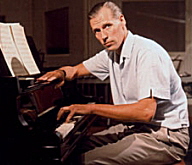 However, George Martin sensed that John wasn't happy with the song. “Before the very first recording of 'Strawberry Fields Forever,' John stood opposite me in the studio and played me the song on his acoustic guitar,” George Martin recalls. “It was absolutely lovely. Then when we actually taped it with the usual instruments it began to get heavy. John didn't say anything but I knew it wasn't what he originally wanted...I metaphorically shrugged my shoulders and said: 'Well, that really wasn't what I'd thought of, but it's OK.' And off John went” However, George Martin sensed that John wasn't happy with the song. “Before the very first recording of 'Strawberry Fields Forever,' John stood opposite me in the studio and played me the song on his acoustic guitar,” George Martin recalls. “It was absolutely lovely. Then when we actually taped it with the usual instruments it began to get heavy. John didn't say anything but I knew it wasn't what he originally wanted...I metaphorically shrugged my shoulders and said: 'Well, that really wasn't what I'd thought of, but it's OK.' And off John went”
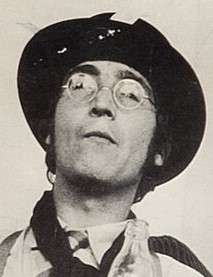 George Martin's intuitions were correct. “John went away and listened to the lacquers we had made of it and...a week later he came back and said...,'George, I'm not very happy about that record we just made. It's not exactly what I had in mind when I first wrote it. I'd like to do it again.' But I had to admit, '...I thought it was going to be a little more flowing than it has been,' John said, 'That's the point. I want it a little smoother. Can you do a score for me and we'll do a new record?' So, I said, 'What do you want to use on it then?' And he said, 'Well, strings and a bit of brass.' So I scored it for some cellos and for some trumpets and various things, and we made another record.” George Martin's intuitions were correct. “John went away and listened to the lacquers we had made of it and...a week later he came back and said...,'George, I'm not very happy about that record we just made. It's not exactly what I had in mind when I first wrote it. I'd like to do it again.' But I had to admit, '...I thought it was going to be a little more flowing than it has been,' John said, 'That's the point. I want it a little smoother. Can you do a score for me and we'll do a new record?' So, I said, 'What do you want to use on it then?' And he said, 'Well, strings and a bit of brass.' So I scored it for some cellos and for some trumpets and various things, and we made another record.”
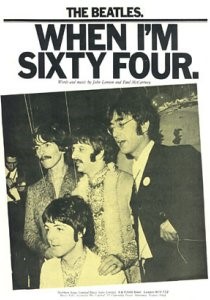 This conversation probably took place exactly “a week later,” December 6th, 1966, during the recording session used to start a new composition entitled “When I'm Sixty-Four.” The conversation, however, was explained somewhat differently by Geoff Emerick. Referring to John's conversation with George Martin, Geoff Emerick depicts John as inarticulately “mumbling, 'I don't know; I just think it should somehow be heavier.' 'Heavier how, John?' George asked. 'I dunno, just kind of, y'know...heavier.' Paul did his best to translate John's abstract notion into concrete musical form. Pointing out how well the flute sound on the Mellotron had worked, he suggested that perhaps some outside musicians be brought in, that the song be scored for some orchestral instrumentation. John loved the idea, specifically requesting cellos and trumpets. 'Do a good job, George,' he instructed the somewhat uncertain producer as he departed the control room. 'Just make sure it's heavy.'” This conversation probably took place exactly “a week later,” December 6th, 1966, during the recording session used to start a new composition entitled “When I'm Sixty-Four.” The conversation, however, was explained somewhat differently by Geoff Emerick. Referring to John's conversation with George Martin, Geoff Emerick depicts John as inarticulately “mumbling, 'I don't know; I just think it should somehow be heavier.' 'Heavier how, John?' George asked. 'I dunno, just kind of, y'know...heavier.' Paul did his best to translate John's abstract notion into concrete musical form. Pointing out how well the flute sound on the Mellotron had worked, he suggested that perhaps some outside musicians be brought in, that the song be scored for some orchestral instrumentation. John loved the idea, specifically requesting cellos and trumpets. 'Do a good job, George,' he instructed the somewhat uncertain producer as he departed the control room. 'Just make sure it's heavy.'”
 John got his wish two days later, December 8th, 1966, as The Beatles once again re-convened in EMI Studio Two at 7 pm to start yet another version of “Strawberry Fields Forever.” There was an earlier Beatles recording session that day as well, a three-hour session with Paul for him to record vocals onto “When I'm Sixty-Four.” Shortly after that afternoon session wrapped up at 5:30, George Martin and Geoff Emerick left for a prior engagement even though the “Strawberry Fields” session was due to begin. John got his wish two days later, December 8th, 1966, as The Beatles once again re-convened in EMI Studio Two at 7 pm to start yet another version of “Strawberry Fields Forever.” There was an earlier Beatles recording session that day as well, a three-hour session with Paul for him to record vocals onto “When I'm Sixty-Four.” Shortly after that afternoon session wrapped up at 5:30, George Martin and Geoff Emerick left for a prior engagement even though the “Strawberry Fields” session was due to begin.
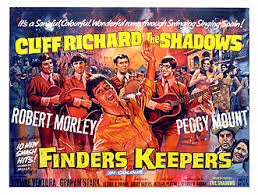 Geoff Emerick explains: “Unfortunately, on the night that they began doing the remake, George Martin and I were in London's West End, attending the premiere of the new Cliff Richard film 'Finders Keepers.' George was quite adamant that we go, which really annoyed me. I felt our place was with The Beatles, and I felt certain that they were going to be unhappy about us taking time off so early into an album project. In retrospect, I think it may have been a psychological ploy on George's part to show them who was in charge.” Geoff Emerick explains: “Unfortunately, on the night that they began doing the remake, George Martin and I were in London's West End, attending the premiere of the new Cliff Richard film 'Finders Keepers.' George was quite adamant that we go, which really annoyed me. I felt our place was with The Beatles, and I felt certain that they were going to be unhappy about us taking time off so early into an album project. In retrospect, I think it may have been a psychological ploy on George's part to show them who was in charge.”
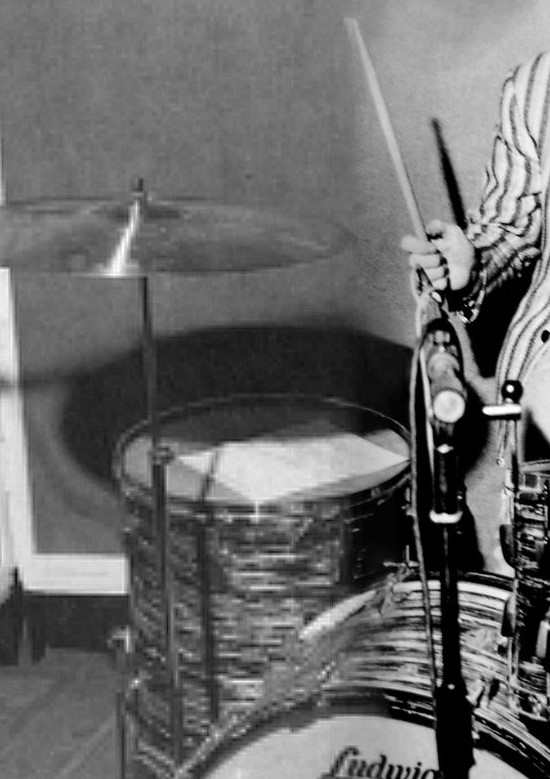 In their absence, however, technical engineer Dave Harries was there to get things going. “Soon after I had lined up the microphones and instruments in the studio that night,” Dave Harries recounts, “The Beatles arrived, hot to record. There was nobody else there but me so I became producer/engineer. We recorded Ringo's cymbals, played them backwards, Paul and George were on timps (timpani) and bongos, Mal Evans played tambourine, we overdubbed the guitars (on to "Take 15"), everything. It sounded great. When George (Martin) and Geoff (Emerick) came back I scuttled upstairs because I shouldn't really have been recording them.” The guitar phrases, described by Ian MacDonald in his book “Revolution In The Head” as “sitar-like guitar fills in the fade,” were played by Paul. Kevin Howlett's liner notes in the 50th Anniversary release of "Sgt. Pepper" sheds a little more light on the recording session for this day. "A new rhythm track was recorded with a performance of drums, cymbal, hi-hat, snare drum, bongos, maracas and tambourine recorded to a mono tape machine." In their absence, however, technical engineer Dave Harries was there to get things going. “Soon after I had lined up the microphones and instruments in the studio that night,” Dave Harries recounts, “The Beatles arrived, hot to record. There was nobody else there but me so I became producer/engineer. We recorded Ringo's cymbals, played them backwards, Paul and George were on timps (timpani) and bongos, Mal Evans played tambourine, we overdubbed the guitars (on to "Take 15"), everything. It sounded great. When George (Martin) and Geoff (Emerick) came back I scuttled upstairs because I shouldn't really have been recording them.” The guitar phrases, described by Ian MacDonald in his book “Revolution In The Head” as “sitar-like guitar fills in the fade,” were played by Paul. Kevin Howlett's liner notes in the 50th Anniversary release of "Sgt. Pepper" sheds a little more light on the recording session for this day. "A new rhythm track was recorded with a performance of drums, cymbal, hi-hat, snare drum, bongos, maracas and tambourine recorded to a mono tape machine."
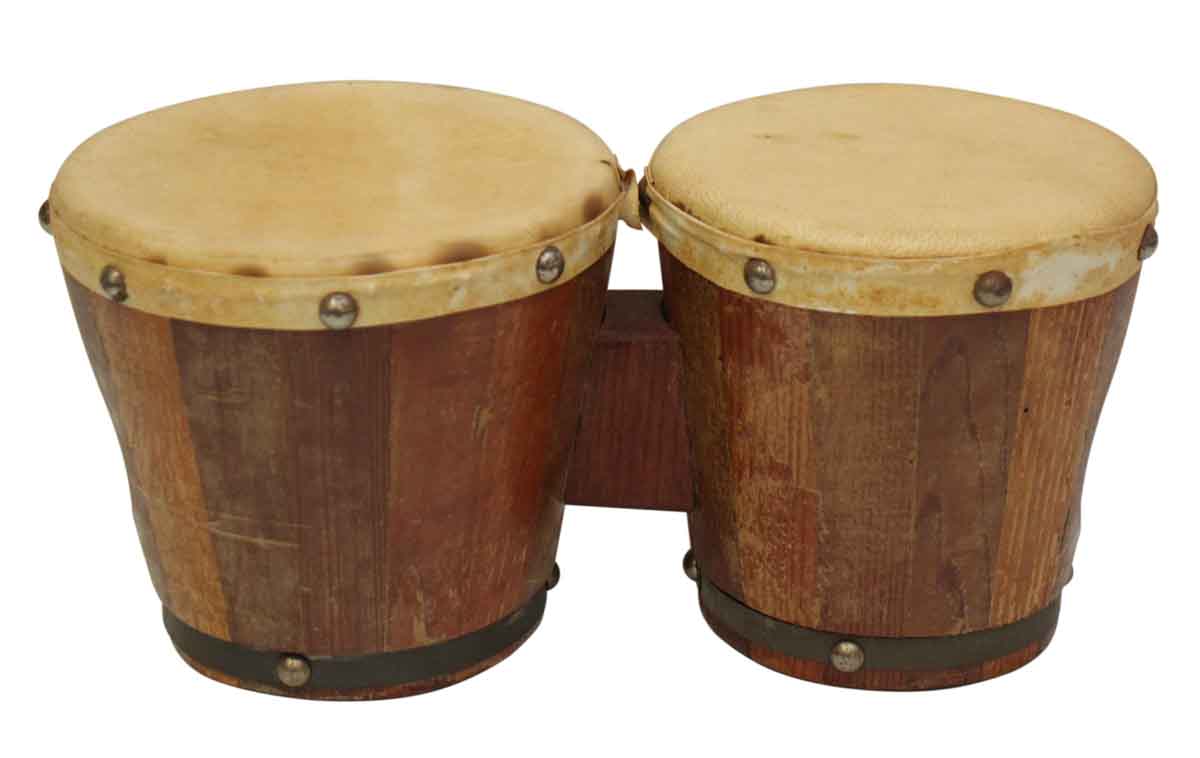 Geoff Emerick recalls, “It was midnight when we finally returned to the studio, only to find the four Beatles still hard at work with...Dave Harries, who had been recruited to start the session in our absence. In the end, only part of what he recorded ever made its way onto the final release version; George (Martin) and I stayed on until nearly dawn and ended up redoing most of it.” Geoff Emerick recalls, “It was midnight when we finally returned to the studio, only to find the four Beatles still hard at work with...Dave Harries, who had been recruited to start the session in our absence. In the end, only part of what he recorded ever made its way onto the final release version; George (Martin) and I stayed on until nearly dawn and ended up redoing most of it.”
 According to Mark Lewisohn's book “The Beatles Recording Sessions,” this wasn't entirely true. “There was still a very long way to go before 'Strawberry Fields Forever' was ready for record release but Harries' version – or part of it, anyway – was a vital part of that record.” The information shows that three-quarters of “Take 15,” produced by Dave Harries, was used in the mix made on that day. “I am very proud of that,” says Dave Harries, “it was a very good record. Geoff (Emerick) was moaning because there was a lot of top (treble) on the cymbals. I said it was the only time there'd been top on any Beatles records!” According to Mark Lewisohn's book “The Beatles Recording Sessions,” this wasn't entirely true. “There was still a very long way to go before 'Strawberry Fields Forever' was ready for record release but Harries' version – or part of it, anyway – was a vital part of that record.” The information shows that three-quarters of “Take 15,” produced by Dave Harries, was used in the mix made on that day. “I am very proud of that,” says Dave Harries, “it was a very good record. Geoff (Emerick) was moaning because there was a lot of top (treble) on the cymbals. I said it was the only time there'd been top on any Beatles records!”
There were a total of 15 takes of the song recorded on this day, numbered 9 through 24 (numbers 8 and 19 skipped, probably in error). Nine of these takes made it through the entire song, but a decision was made to splice together two incomplete takes, "take 15" and "take 24," to create a suitable rhythm track.
 After the editing of “Take 15” and “Take 24” was performed by the engineering team of George Martin, Geoff Emerick and Phil McDonald, they attempted to remix this into “Take 25,” but because of the lateness of the hour, they decided to wait until the next day. The session finally concluded at 3:40 the following morning. After the editing of “Take 15” and “Take 24” was performed by the engineering team of George Martin, Geoff Emerick and Phil McDonald, they attempted to remix this into “Take 25,” but because of the lateness of the hour, they decided to wait until the next day. The session finally concluded at 3:40 the following morning.
That next day, December 9th, 1966, starting at 2:30 pm, the same engineering team of George Martin, Geoff Emerick and Phil McDonald resumed work on creating “Take 25” from the edited "take 15" and "take 24" of the previous day, resulting in all of the previous day's work being mixed down to one track of a four track tape. This left three open tracks for overdubbing on this day.
 The book “The Beatles Recording Sessions” explains these overdubs: “Onto track two Ringo added various bits of percussion, including some decidedly heavy drum sounds.” As indicated in the liner notes of the album “Anthology 2,” which included the last minute or so of what was created on this day, John Lennon was standing nearby a live microphone uttering some nonsensical vocalizing. After some nondescript utterances were made, he clearly states twice (rolling his “r”s, no less) “Cranberry sauce.” Then, when the percussive rhythm track from the previous day runs out and Ringo is still performing his “heavy drum sounds,” John exclaims, “All right, calm down, Ringo, the song's over.” The book “The Beatles Recording Sessions” explains these overdubs: “Onto track two Ringo added various bits of percussion, including some decidedly heavy drum sounds.” As indicated in the liner notes of the album “Anthology 2,” which included the last minute or so of what was created on this day, John Lennon was standing nearby a live microphone uttering some nonsensical vocalizing. After some nondescript utterances were made, he clearly states twice (rolling his “r”s, no less) “Cranberry sauce.” Then, when the percussive rhythm track from the previous day runs out and Ringo is still performing his “heavy drum sounds,” John exclaims, “All right, calm down, Ringo, the song's over.”
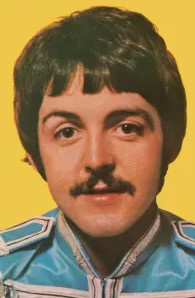 As far as the long-held mysterious meaning about the phrase “Cranberry sauce” that actually made it onto the finished release of the record (heard twice on some foreign pressings), Paul himself puts the rumors to bed. “At the end of 'Strawberry Fields' that wasn't 'I buried Paul,' at all. That was John saying 'Cranberry sauce.' That's John's humor. John would say something totally out of sync, like 'Cranberry sauce.' If you don't realize that John's apt to say 'Cranberry sauce' when he feels like it, then you start to hear a funny little word there, and you think, 'Aha!” For many in late 1969, playing this song at a faster speed revealed John saying “I buried Paul,” which became an “Aha!” moment for the rumor mill who insisted from various clues that the cute Beatle had been deceased since late 1966, or around the time that this song was recorded. As far as the long-held mysterious meaning about the phrase “Cranberry sauce” that actually made it onto the finished release of the record (heard twice on some foreign pressings), Paul himself puts the rumors to bed. “At the end of 'Strawberry Fields' that wasn't 'I buried Paul,' at all. That was John saying 'Cranberry sauce.' That's John's humor. John would say something totally out of sync, like 'Cranberry sauce.' If you don't realize that John's apt to say 'Cranberry sauce' when he feels like it, then you start to hear a funny little word there, and you think, 'Aha!” For many in late 1969, playing this song at a faster speed revealed John saying “I buried Paul,” which became an “Aha!” moment for the rumor mill who insisted from various clues that the cute Beatle had been deceased since late 1966, or around the time that this song was recorded.
 Geoff Emerick goes one further in explaining this mysterious Lennon lyric: “John was actually saying 'cranberry sauce,' not 'I buried Paul,' for the simple reason that we were recording around the time of the Thanksgiving holiday, and just before the take, we had all been chatting about turkey and all the trimmings, and how Americans traditionally ate such a meal at that time of year. That's the way John was – he'd often work little phrases or snatches of conversation about something he had been recently reading or talking about into the music he was recording...I'm sorry to disappoint anyone who ever bought into this rubbish, but Paul was, in fact, very much alive and well, and there was never any kind of plan to fool the public by scattering clues about his supposed demise.” Geoff Emerick goes one further in explaining this mysterious Lennon lyric: “John was actually saying 'cranberry sauce,' not 'I buried Paul,' for the simple reason that we were recording around the time of the Thanksgiving holiday, and just before the take, we had all been chatting about turkey and all the trimmings, and how Americans traditionally ate such a meal at that time of year. That's the way John was – he'd often work little phrases or snatches of conversation about something he had been recently reading or talking about into the music he was recording...I'm sorry to disappoint anyone who ever bought into this rubbish, but Paul was, in fact, very much alive and well, and there was never any kind of plan to fool the public by scattering clues about his supposed demise.”
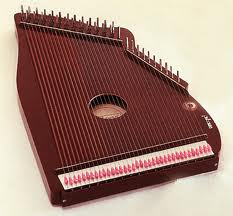 Also on track two was overdubbed George Harrison playing an instrument not heard on any other Beatles song. The book “Beatles Gear” describes the instrument as a “surmandal (often spelled as swordmandal or swarmandal). This Indian / Pakistani instrument is similar to a board zither, usually with about 40 metal strings played with a plectrum or plectrums, and provides something like the sound of a high-pitched harp...the surmandal is prominently heard just before the start of verse two (1:18) and verse three (2:04), and also at the end of the song (from 3:06 and prominently from 3:15).” Also on track two was overdubbed George Harrison playing an instrument not heard on any other Beatles song. The book “Beatles Gear” describes the instrument as a “surmandal (often spelled as swordmandal or swarmandal). This Indian / Pakistani instrument is similar to a board zither, usually with about 40 metal strings played with a plectrum or plectrums, and provides something like the sound of a high-pitched harp...the surmandal is prominently heard just before the start of verse two (1:18) and verse three (2:04), and also at the end of the song (from 3:06 and prominently from 3:15).”
It may be surprising to some that George's contribution to Beatles recordings at this point involved Indian instruments, such as the surmandal or sitar, whenever he could work it in, even relinquishing the guitar to Paul without much hesitation. “I'd just got back from India, and my heart was still out there,” George related. “I was losing interest in being "fab" at that point.”
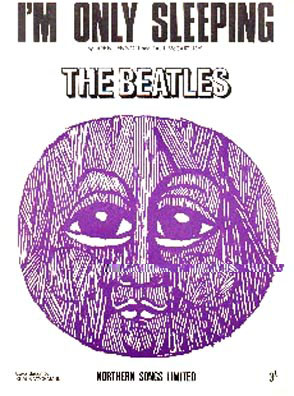 Another quick mono mix was then created because they saw a need to cut some more acetates. Afterwards, another overdub was done on this day, which was the very complicated endeavor of recording backwards cymbals. Mark Lewisohn explains in “The Beatles Recording Sessions”: “Rather like the two backward guitar solos in 'I'm Only Sleeping,' the taping of the cymbals was no easy task. The pattern was worked out in the normal manner but it was then written down in reverse so that when recorded and the tape was played backwards the sounds would fit the bars precisely.” Since all of the overdubs performed on this day occurred in different parts of the song, they all appeared on track two of the tape, leaving tracks three and four available for further overdubs. When this was complete, the session ended at 10 pm, actually finishing for the day before the next day began. Another quick mono mix was then created because they saw a need to cut some more acetates. Afterwards, another overdub was done on this day, which was the very complicated endeavor of recording backwards cymbals. Mark Lewisohn explains in “The Beatles Recording Sessions”: “Rather like the two backward guitar solos in 'I'm Only Sleeping,' the taping of the cymbals was no easy task. The pattern was worked out in the normal manner but it was then written down in reverse so that when recorded and the tape was played backwards the sounds would fit the bars precisely.” Since all of the overdubs performed on this day occurred in different parts of the song, they all appeared on track two of the tape, leaving tracks three and four available for further overdubs. When this was complete, the session ended at 10 pm, actually finishing for the day before the next day began.
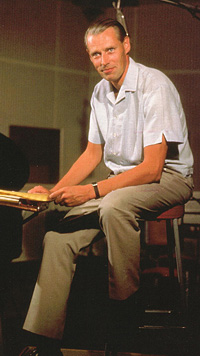 Nearly a week later, on December 15th, 1966, The Beatles entered EMI Studio Two once again to add more overdubs to this new version of “Strawberry Fields Forever.” The session began at 2:30 pm with the first thing on the agenda being recording the distinctive brass and string score that George Martin had prepared for the song. The trumpets and cellos were recorded onto tracks three and four of the tape, which once again called for another tape reduction to open up more tracks for more overdubs. After all, John had not yet recorded any vocals for this re-make of the song. Interestingly, there were some parts of George Martin's score for the end of the song that ended up being dropped at the last minute, these trumpet parts being heard at the conclusion of the mix done on this day. Nearly a week later, on December 15th, 1966, The Beatles entered EMI Studio Two once again to add more overdubs to this new version of “Strawberry Fields Forever.” The session began at 2:30 pm with the first thing on the agenda being recording the distinctive brass and string score that George Martin had prepared for the song. The trumpets and cellos were recorded onto tracks three and four of the tape, which once again called for another tape reduction to open up more tracks for more overdubs. After all, John had not yet recorded any vocals for this re-make of the song. Interestingly, there were some parts of George Martin's score for the end of the song that ended up being dropped at the last minute, these trumpet parts being heard at the conclusion of the mix done on this day.
The existing elements of the song were reduced down to tracks one and two of what now became “Take 26.” Onto track three was recorded an exceptionally fast Lennon vocal, John then double-tracking his vocals during the choruses onto track four. Five mono mixes were then performed by the same engineering team of George Martin, Geoff Emerick and Phil McDonald, these mixes numbered 5 through 9, undoubtedly made for acetate cutting purposes. This session ended approximately at midnight.
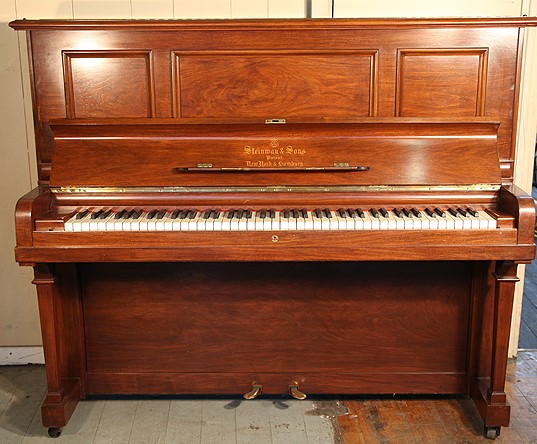 The final overdubs were added to “Take 26” about a week later, on December 21st, 1966, in EMI Studio Two. While work was done on “When I'm Sixty-Four” early that evening, attention was given to “Strawberry Fields” at 10 pm. Lennon added yet more vocals, this time a harmony to the first line of the final chorus (“Let me take you down...) while McCartney plunked piano chords during the finale of the song. The final overdubs were added to “Take 26” about a week later, on December 21st, 1966, in EMI Studio Two. While work was done on “When I'm Sixty-Four” early that evening, attention was given to “Strawberry Fields” at 10 pm. Lennon added yet more vocals, this time a harmony to the first line of the final chorus (“Let me take you down...) while McCartney plunked piano chords during the finale of the song.
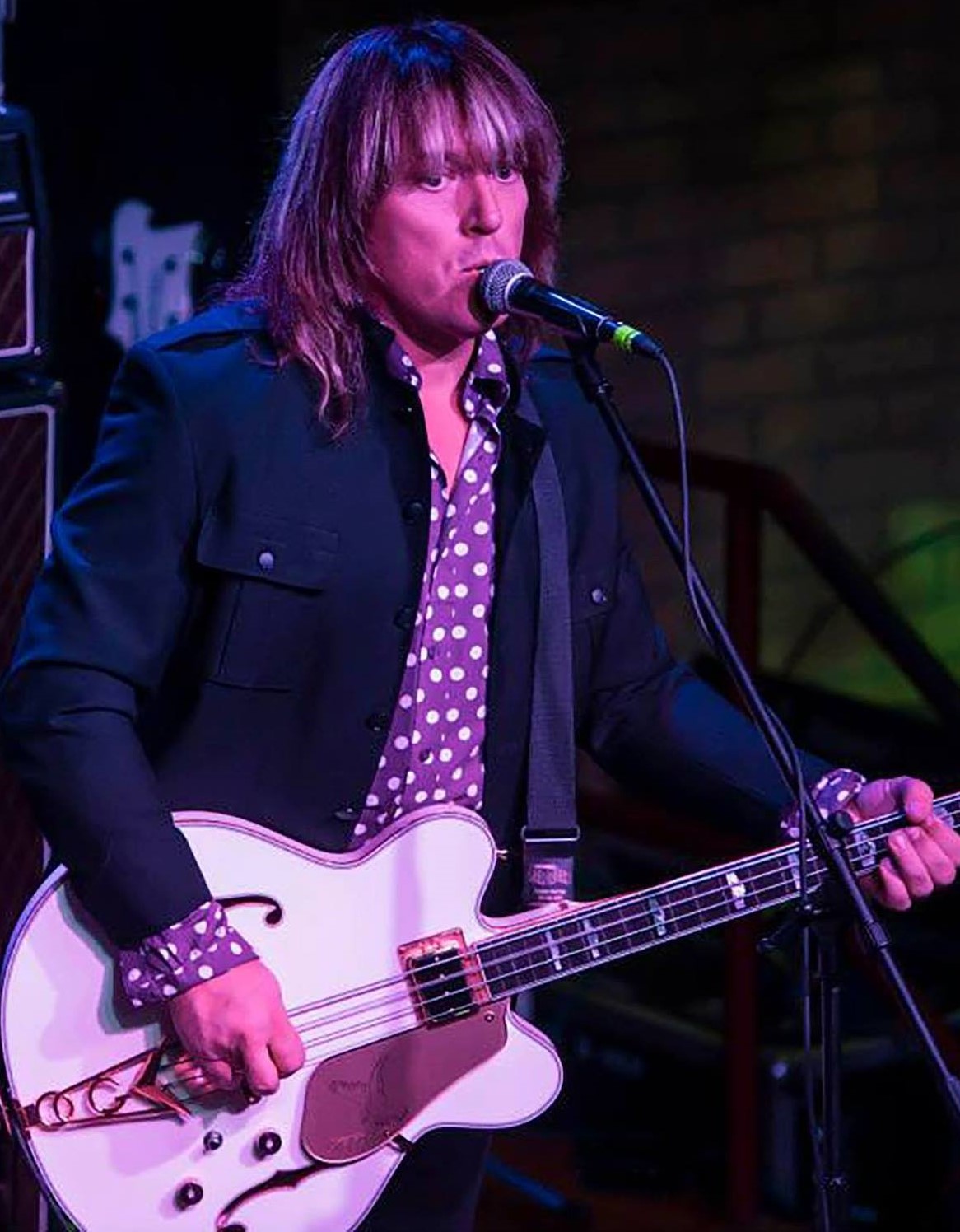 Another disjointed overdub was also recorded on this day as heard during the song's closing moments. There are two differing accounts of this overdub, Kevin Howlett, in the "Sgt. Pepper" 50th Anniversay edition liner notes explaining it as "George Martin added Mellotron, as did John using the 'Swinging Flutes' setting for the end of the song." Andy Babiuk's book “Beatles Gear,” however, describes this overdub differently and in more detail, identifying it as “swirling Mellotron. This time McCartney played the...left-hand keyboard, selecting a tape of an entire passage of ensemble flutes. The passage was played in a random, repetitive fashion, without necessarily waiting for the internal tape to return to the start after releasing a key. The result sounds something like looped flutes, but is pure Mellotron.” Funny enough, if it was indeed Paul who performed this Mellotron overdub, and considering all the contributions that Paul made to this final version of the song, he never laid down a bass track! Another disjointed overdub was also recorded on this day as heard during the song's closing moments. There are two differing accounts of this overdub, Kevin Howlett, in the "Sgt. Pepper" 50th Anniversay edition liner notes explaining it as "George Martin added Mellotron, as did John using the 'Swinging Flutes' setting for the end of the song." Andy Babiuk's book “Beatles Gear,” however, describes this overdub differently and in more detail, identifying it as “swirling Mellotron. This time McCartney played the...left-hand keyboard, selecting a tape of an entire passage of ensemble flutes. The passage was played in a random, repetitive fashion, without necessarily waiting for the internal tape to return to the start after releasing a key. The result sounds something like looped flutes, but is pure Mellotron.” Funny enough, if it was indeed Paul who performed this Mellotron overdub, and considering all the contributions that Paul made to this final version of the song, he never laid down a bass track!
With this complete, the session ended at about 11:45 pm. Upon listening to this completely new remake, which can be heard in its entirety on various editions of the 50th Anniversary release of "Sgt. Pepper," it appears that John got the “heavy” version of “Strawberry Fields Forever” that he asked for. Surely, now he would be happy.
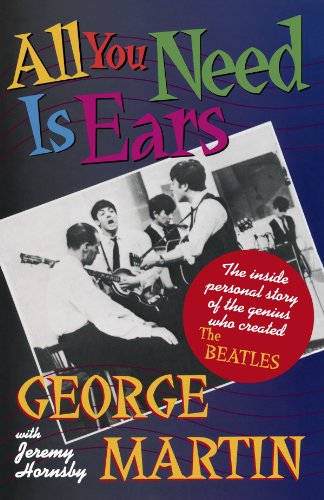 “A few days later he rang me up,” George Martin relates in his book “All You Need Is Ears,” “and said: 'I like that one, I really do. But, you know, the other one's got something, too,'” referring to the newly recorded version of the song in comparison to the earlier version. “'Yes, I know,' I said, 'they're both good. But aren't we starting to split hairs?' Perhaps I shouldn't have used the word 'split,' because John's reply was: 'I like the beginning of the first one, and I like the end of the second one. Why don't we just join them together?' 'Well, there are only two things against it,' I said. 'One is that they're in different keys. The other is that they're in different tempos.' 'Yeah, but you can do something about it, I know. You can fix it, George.'” “A few days later he rang me up,” George Martin relates in his book “All You Need Is Ears,” “and said: 'I like that one, I really do. But, you know, the other one's got something, too,'” referring to the newly recorded version of the song in comparison to the earlier version. “'Yes, I know,' I said, 'they're both good. But aren't we starting to split hairs?' Perhaps I shouldn't have used the word 'split,' because John's reply was: 'I like the beginning of the first one, and I like the end of the second one. Why don't we just join them together?' 'Well, there are only two things against it,' I said. 'One is that they're in different keys. The other is that they're in different tempos.' 'Yeah, but you can do something about it, I know. You can fix it, George.'”
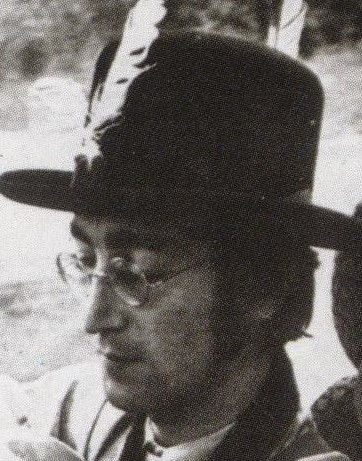 Geoff Emerick explains this conversation as, not a phone call between John and George Martin, but as an interchange in the recording studio, him witnessing and participating in the conversation as well. “Lennon continued, 'So what I'd like our young Geoffrey here to do is to join the two bits together...You can do it,' he said simply. With that, he turned and headed out the door. 'What do you think, Geoff?' a deflated George asked me after John had gone. My reply was noncommittal. 'I'm not sure; I guess all we can do is have a go.'” Geoff Emerick explains this conversation as, not a phone call between John and George Martin, but as an interchange in the recording studio, him witnessing and participating in the conversation as well. “Lennon continued, 'So what I'd like our young Geoffrey here to do is to join the two bits together...You can do it,' he said simply. With that, he turned and headed out the door. 'What do you think, Geoff?' a deflated George asked me after John had gone. My reply was noncommittal. 'I'm not sure; I guess all we can do is have a go.'”
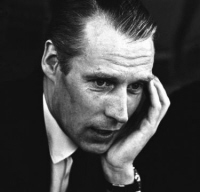 George Martin continues: “John always left this kind of thing to me. He never professed to know anything about recording. He was the least technical of The Beatles. He had a profound faith in my ability to cope with such problems, a faith which was sometimes misplaced, as I certainly felt it was on this occasion. He had presented me with an almost insuperable task. But I had to have a go.” George Martin continues: “John always left this kind of thing to me. He never professed to know anything about recording. He was the least technical of The Beatles. He had a profound faith in my ability to cope with such problems, a faith which was sometimes misplaced, as I certainly felt it was on this occasion. He had presented me with an almost insuperable task. But I had to have a go.”
December 22nd, 1966, was the day that George Martin and Geoff Emerick had “a go” at accomplishing this immense task. Along with 2nd engineer Phil McDonald, they met in the control room of EMI Studio Two at 7 pm to see what they could do at creating a mono mix with John's stipulations.
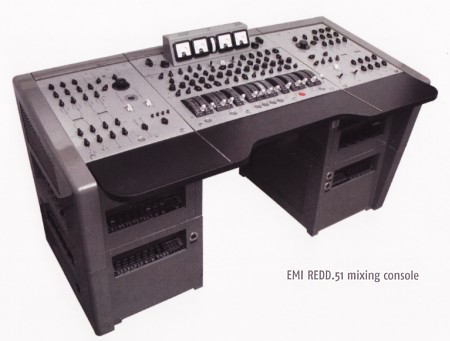 Mono mixes for both versions of the song needed to be made first. “Take seven” was the finished master of the slower version, and from it they created mono remix 10. “Take 26” was the master of the faster version, and from it they created mono remix 11. Now all they had to figure out was how to edit remixes 10 and 11 together efficiently. Since they didn't want to repeat any verses in the finished product, the first step was to delete the second verse of the slower version, which was done just after remix 10 was created. This would bring in the second chorus right after the first verse ended in the slower version. That second verse, containing the lyrics “no one I think is in my tree,” would be heard in the faster version later in the finished song. Now to actually make the crucial edit that combined the two versions. Mono mixes for both versions of the song needed to be made first. “Take seven” was the finished master of the slower version, and from it they created mono remix 10. “Take 26” was the master of the faster version, and from it they created mono remix 11. Now all they had to figure out was how to edit remixes 10 and 11 together efficiently. Since they didn't want to repeat any verses in the finished product, the first step was to delete the second verse of the slower version, which was done just after remix 10 was created. This would bring in the second chorus right after the first verse ended in the slower version. That second verse, containing the lyrics “no one I think is in my tree,” would be heard in the faster version later in the finished song. Now to actually make the crucial edit that combined the two versions.
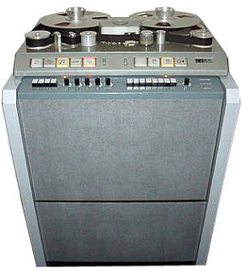 “I listened to the two versions again,” George Martin relates, “and suddenly realized that with a bit of luck I might get away with it, because, with the way that the keys were arranged, the slower version was a semitone flat compared with the faster one. I thought: If I can speed up the one, and slow down the other, I can get the pitches the same. And with any luck, the tempos will be sufficiently close not to be noticeable. I did just that, on a variable-control tape machine, selecting precisely the right spot to make the cut, to join them as nearly perfectly as possible.” “I listened to the two versions again,” George Martin relates, “and suddenly realized that with a bit of luck I might get away with it, because, with the way that the keys were arranged, the slower version was a semitone flat compared with the faster one. I thought: If I can speed up the one, and slow down the other, I can get the pitches the same. And with any luck, the tempos will be sufficiently close not to be noticeable. I did just that, on a variable-control tape machine, selecting precisely the right spot to make the cut, to join them as nearly perfectly as possible.”
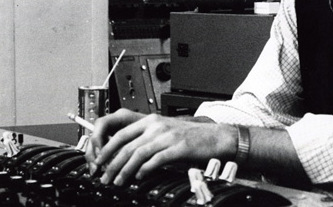 Geoff Emerick adds: “John's request, on the face of it, appeared completely unfeasible given the technology of the time. Today, a computer can quite easily change the pitch and/or tempo of a recording independently of each other, but all we had at our disposal was a pair of editing scissors, a couple of tape machines, and a varispeed control. The problem was that as soon as you speed up a tape, the pitch also goes up; slowing down a tape has the opposite effect, slowing the tempo, but also lowering the pitch. We had our work cut out for us...After some trial-and-error experimentation, I discovered that by speeding up the playback of the first take and slowing down the playback of the second, I could get them to match in both pitch and tempo.” Geoff Emerick adds: “John's request, on the face of it, appeared completely unfeasible given the technology of the time. Today, a computer can quite easily change the pitch and/or tempo of a recording independently of each other, but all we had at our disposal was a pair of editing scissors, a couple of tape machines, and a varispeed control. The problem was that as soon as you speed up a tape, the pitch also goes up; slowing down a tape has the opposite effect, slowing the tempo, but also lowering the pitch. We had our work cut out for us...After some trial-and-error experimentation, I discovered that by speeding up the playback of the first take and slowing down the playback of the second, I could get them to match in both pitch and tempo.”
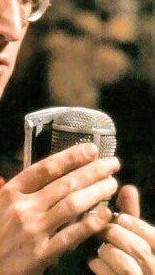 “Next, I had to find a suitable edit point,” Geoff Emerick continues, “one that wasn't obvious. The idea, after all, was to make the listeners think they were hearing a complete performance. The one I picked happened to fall almost exactly sixty seconds in, at the beginning of the second chorus, on the word 'going' ('Let me take you down 'cause I'm going to...'). Now it was a matter of figuring out exactly when to alter the playback speeds. George (Martin) and I decided to allow the second half to play all the way through at the slower speed; doing so gave John's voice a smoky, thick quality that seemed to complement the psychedelic lyric and swirling instrumentation. Things were a bit trickier with the beginning section; it started out at such a perfect, laconic tempo that we didn't want to speed it up all the way through. Luckily, the EMI tape machines were fitted with very fine varispeed controls. With a bit of practice, I was able to gradually increase the speed of the first take and get it to a certain precise point, right up to the moment where we knew we were going to do the edit. The change is so subtle as to be virtually unnoticeable.” “Next, I had to find a suitable edit point,” Geoff Emerick continues, “one that wasn't obvious. The idea, after all, was to make the listeners think they were hearing a complete performance. The one I picked happened to fall almost exactly sixty seconds in, at the beginning of the second chorus, on the word 'going' ('Let me take you down 'cause I'm going to...'). Now it was a matter of figuring out exactly when to alter the playback speeds. George (Martin) and I decided to allow the second half to play all the way through at the slower speed; doing so gave John's voice a smoky, thick quality that seemed to complement the psychedelic lyric and swirling instrumentation. Things were a bit trickier with the beginning section; it started out at such a perfect, laconic tempo that we didn't want to speed it up all the way through. Luckily, the EMI tape machines were fitted with very fine varispeed controls. With a bit of practice, I was able to gradually increase the speed of the first take and get it to a certain precise point, right up to the moment where we knew we were going to do the edit. The change is so subtle as to be virtually unnoticeable.”
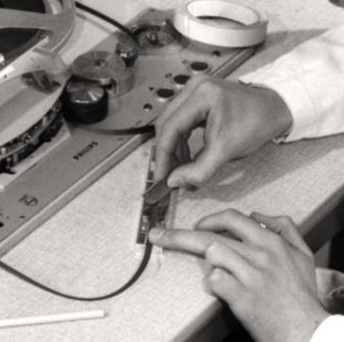 The actual physical splice was of great concern as well. “I found that I couldn't cut the tape at a normal forty-five-degree angle,” Geoff Emerick explains, “because the sound just kind of jumped – I was, after all, joining together two totally different performances. As a result, I had to make the cut at a very shallow angle so that it was more like a crossfade than a splice. It took many hours to get everything to work perfectly.” The actual physical splice was of great concern as well. “I found that I couldn't cut the tape at a normal forty-five-degree angle,” Geoff Emerick explains, “because the sound just kind of jumped – I was, after all, joining together two totally different performances. As a result, I had to make the cut at a very shallow angle so that it was more like a crossfade than a splice. It took many hours to get everything to work perfectly.”
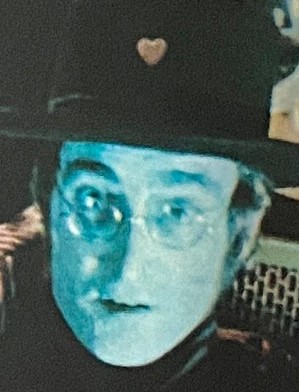 No Beatles were present while this landmark editing job was being performed but, lo and behold, one did show up moments later. "John popped by to see how we were getting on – I had literally finished the edit just a few moments before he arrived. As we played the results of our labors to John for the first time, he listened carefully, head down, deep in concentration. I made a point of standing in front of the tape machine so that he couldn't see the splice go by. A few seconds after the edit flew past, Lennon lifted his head up and a grin spread across his face. 'Has it passed yet?' he asked. 'Sure had,' I replied proudly. 'Well, good on yer, Geoffrey!' he said. He absolutely loved what we had done. We played (it) over and over again that night for John, and at the conclusion each time, he'd turn to us and repeat the same three words, eyes wide with excitement: 'Brilliant. Just brilliant.'" No Beatles were present while this landmark editing job was being performed but, lo and behold, one did show up moments later. "John popped by to see how we were getting on – I had literally finished the edit just a few moments before he arrived. As we played the results of our labors to John for the first time, he listened carefully, head down, deep in concentration. I made a point of standing in front of the tape machine so that he couldn't see the splice go by. A few seconds after the edit flew past, Lennon lifted his head up and a grin spread across his face. 'Has it passed yet?' he asked. 'Sure had,' I replied proudly. 'Well, good on yer, Geoffrey!' he said. He absolutely loved what we had done. We played (it) over and over again that night for John, and at the conclusion each time, he'd turn to us and repeat the same three words, eyes wide with excitement: 'Brilliant. Just brilliant.'"
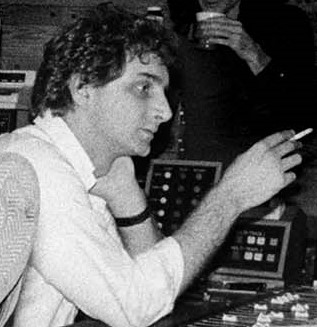 Interestingly, as detailed in Albert Goldman's book "The Lives Of John Lennon," the ex-Beatle met with producer Jack Douglas on November 10th, 1980 and discussed re-recording many of his classic '60s hits, including "Strawberry Fields Forever." As the book relates, "He denounced the old arrangements, particularly George Martin's famous splice on 'Strawberry Fields,' which Lennon castigated as a 'stupid mistake.'” Interestingly, as detailed in Albert Goldman's book "The Lives Of John Lennon," the ex-Beatle met with producer Jack Douglas on November 10th, 1980 and discussed re-recording many of his classic '60s hits, including "Strawberry Fields Forever." As the book relates, "He denounced the old arrangements, particularly George Martin's famous splice on 'Strawberry Fields,' which Lennon castigated as a 'stupid mistake.'”
“The Beatles Recording Sessions” states: “They did it so well that few people, even today, know exactly where the edit is. 'That's funny,' says George Martin, 'I can hear it every time. It sticks out like a sore thumb to me!'” With this engineering session ending at 11:30 pm, it took a total of four-and-a-half hours to perform this masterful edit.
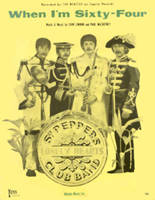 Two weeks later, on December 29th, 1966, the same engineering team assembled in the control room of EMI Studio Three to make a tape copy of the mono mix of “Strawberry Fields Forever” (labeling it “remix mono 13”) for the North American market. This, as well as creating a mono mix of “When I'm Sixty-Four,” took them from 2:30 to 4:45 pm to perform. Afterwards, they immediately tackled creating the first stereo mix of “Strawberry Fields,” working hard to mimic what they accomplished with the mono mix. While it took them four-and-a-half hours to create the mono mix, they got this done in less than an hour (4:45 to 5:40 pm) since they now knew what they were doing. Two weeks later, on December 29th, 1966, the same engineering team assembled in the control room of EMI Studio Three to make a tape copy of the mono mix of “Strawberry Fields Forever” (labeling it “remix mono 13”) for the North American market. This, as well as creating a mono mix of “When I'm Sixty-Four,” took them from 2:30 to 4:45 pm to perform. Afterwards, they immediately tackled creating the first stereo mix of “Strawberry Fields,” working hard to mimic what they accomplished with the mono mix. While it took them four-and-a-half hours to create the mono mix, they got this done in less than an hour (4:45 to 5:40 pm) since they now knew what they were doing.
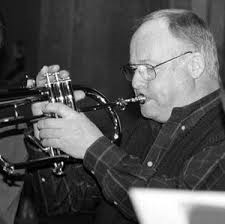 They created a stereo mix from the slower version of the song (“Take seven”) and a stereo mix of the faster version (“Take 26”). They then attempted to edit them together, which they called “remix 3,” but thought it might be able to be improved upon. A second stereo mix of the faster version was then done, and then they worked at editing together the stereo mix of the slower version with the new stereo mix of the faster version, calling this “remix 5.” In the end, it was decided that their first attempt, “remix 3,” was the better one. An interesting effect was made on this stereo mix in order to distract the listener from the edit between the two versions of the song, this being that the cello and trumpet track (featuring Greg Bowen) was panned quickly from left to right and then stays there for the rest of the song. They created a stereo mix from the slower version of the song (“Take seven”) and a stereo mix of the faster version (“Take 26”). They then attempted to edit them together, which they called “remix 3,” but thought it might be able to be improved upon. A second stereo mix of the faster version was then done, and then they worked at editing together the stereo mix of the slower version with the new stereo mix of the faster version, calling this “remix 5.” In the end, it was decided that their first attempt, “remix 3,” was the better one. An interesting effect was made on this stereo mix in order to distract the listener from the edit between the two versions of the song, this being that the cello and trumpet track (featuring Greg Bowen) was panned quickly from left to right and then stays there for the rest of the song.
Two more tape copies of the mono versions of the song were made by the same engineering team in EMI Studio Two; one on December 30th, 1966 (between 7 and 8 pm) and the other on January 2nd, 1967 (between 2:30 and 4 pm). The intended destination of both of these tape copies was Capitol Records in the US.
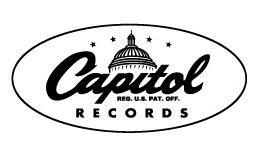 Towards the end of 1967 it was decided that “Strawberry Fields Forever” would be featured on the US album “Magical Mystery Tour.” Since a stereo version was already created, all they needed to do was make a tape copy of stereo “remix 3” to give to Capitol Records in the states. This was done by the engineering team of Martin, Emerick and 2nd engineer Graham Kirkby on November 7th, 1967 in the control room of EMI Studio Two, along with many other songs that would appear on this album. Towards the end of 1967 it was decided that “Strawberry Fields Forever” would be featured on the US album “Magical Mystery Tour.” Since a stereo version was already created, all they needed to do was make a tape copy of stereo “remix 3” to give to Capitol Records in the states. This was done by the engineering team of Martin, Emerick and 2nd engineer Graham Kirkby on November 7th, 1967 in the control room of EMI Studio Two, along with many other songs that would appear on this album.
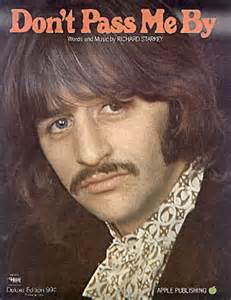 On June 6th, 1968, John and Paul did touch on "Strawberry Fields Forever" in EMI Studio Two, but not in the conventional way. During the recording of Ringo's "Don't Pass Me By," radio personality Kenny Everett stopped by to interview the group for his BBC Radio 1 series "The Kenny Everett Show." Silliness ensued throughout the interview and, at one point Everett requested John and Paul, "Give us a rousing chorus of 'Strawberry Fields Forever' in jazz tempo." With John humorously scat singing, snapping his fingers and slapping his knees, Paul sings the chorus in his best improvised lounge voice, not unlike what is heard on their song "You Know My Name (Look Up The Number)." Obviously, this silly version never saw the light of day but is good for a laugh. On June 6th, 1968, John and Paul did touch on "Strawberry Fields Forever" in EMI Studio Two, but not in the conventional way. During the recording of Ringo's "Don't Pass Me By," radio personality Kenny Everett stopped by to interview the group for his BBC Radio 1 series "The Kenny Everett Show." Silliness ensued throughout the interview and, at one point Everett requested John and Paul, "Give us a rousing chorus of 'Strawberry Fields Forever' in jazz tempo." With John humorously scat singing, snapping his fingers and slapping his knees, Paul sings the chorus in his best improvised lounge voice, not unlike what is heard on their song "You Know My Name (Look Up The Number)." Obviously, this silly version never saw the light of day but is good for a laugh.
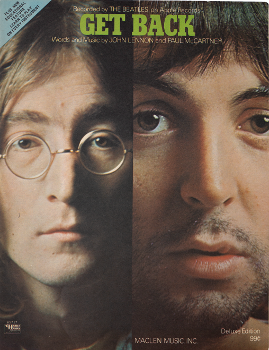 Also, on January 27th, 1969 during one of the final rehearsals at Apple Studios for what became the "Let It Be" album and film, Paul sat down at the piano and began singing and playing a brief version of "Strawberry Fields Forever" with John chiming in on his Epiphone Casino in an attempt to play George's surmandal part. Shortly after this, the band got down to brass tacks and recorded the official version of their new song "Get Back." Also, on January 27th, 1969 during one of the final rehearsals at Apple Studios for what became the "Let It Be" album and film, Paul sat down at the piano and began singing and playing a brief version of "Strawberry Fields Forever" with John chiming in on his Epiphone Casino in an attempt to play George's surmandal part. Shortly after this, the band got down to brass tacks and recorded the official version of their new song "Get Back."
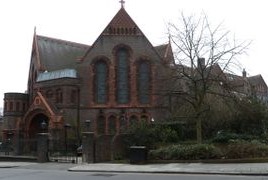 A further stereo mix of the song was made nearly four years later, on October 26th, 1971, at George Martin's AIR Studios in London. George Martin went back to the master tapes and started from scratch, creating stereo mixes of both the slower and faster versions of the song and then editing them together. Some of the noteworthy differences include more vibrant percussion quality, the panning from left to right of the surmaldal as heard at the end of the second and third choruses, and the slightly longer fade out at the end of the song (so you can actually hear “cranberry sauce” repeated twice instead of once in the previously released versions). John can also be heard quietly counting down the bars of the song during these quiet sections. The cello and trumpet track, however, comes in on the right channel this time around just after the main edit, the panning detail probably forgotten by George Martin in the making of this new stereo mix. Nonetheless, this mix is superior to the original stereo mix in many ways and, while it had only been available on German pressings of the “Magical Mystery Tour” album for many years, has become the standard version in subsequent CD releases from 1987 onward. A further stereo mix of the song was made nearly four years later, on October 26th, 1971, at George Martin's AIR Studios in London. George Martin went back to the master tapes and started from scratch, creating stereo mixes of both the slower and faster versions of the song and then editing them together. Some of the noteworthy differences include more vibrant percussion quality, the panning from left to right of the surmaldal as heard at the end of the second and third choruses, and the slightly longer fade out at the end of the song (so you can actually hear “cranberry sauce” repeated twice instead of once in the previously released versions). John can also be heard quietly counting down the bars of the song during these quiet sections. The cello and trumpet track, however, comes in on the right channel this time around just after the main edit, the panning detail probably forgotten by George Martin in the making of this new stereo mix. Nonetheless, this mix is superior to the original stereo mix in many ways and, while it had only been available on German pressings of the “Magical Mystery Tour” album for many years, has become the standard version in subsequent CD releases from 1987 onward.
 Sometime in 1995, George Martin and Geoff Emerick reunited to create new mixes of the slower, faster and demo versions of the song, as detailed above, for the “Anthology 2” album. Also, George Martin and his son Giles Martin revisited all these master tapes sometime between 2004 and 2006 to create a new version of the song for the 2006 released album "Love." Sometime in 1995, George Martin and Geoff Emerick reunited to create new mixes of the slower, faster and demo versions of the song, as detailed above, for the “Anthology 2” album. Also, George Martin and his son Giles Martin revisited all these master tapes sometime between 2004 and 2006 to create a new version of the song for the 2006 released album "Love."
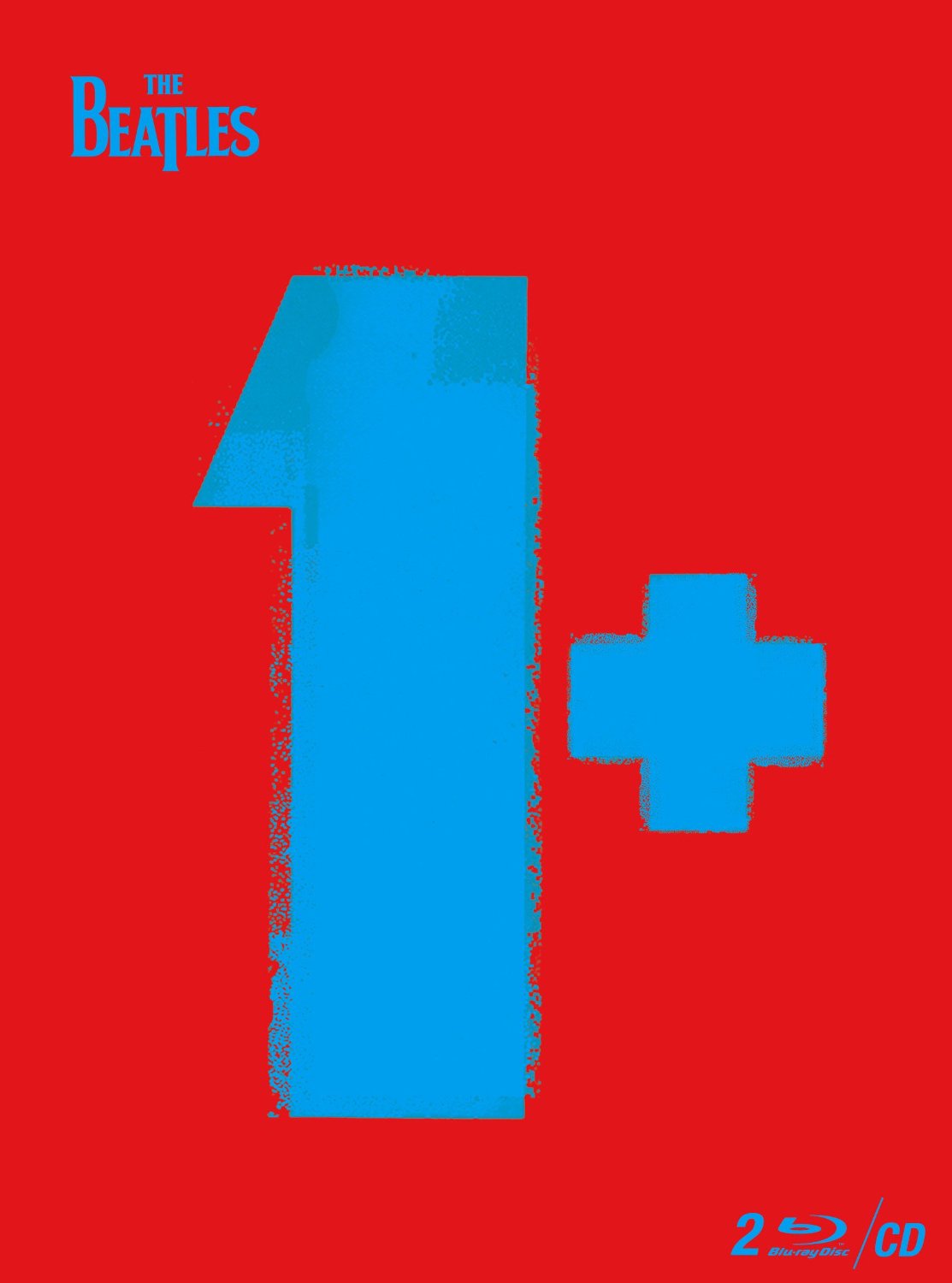 Sometime in 2015, Giles Martin was commissioned to create another new stereo mix of "Strawberry Fields Forever" to pair up with the Beatles film of the song for the DVD and Blu-ray box set entitled "Beatles 1+." Giles Martin and Sam Okell created this excellent stereo mix in Abbey Road Studios, the result being a dynamic mix using the highly sophisticated technological advances of the time, spanning the elements of the recording with less drastic separation. The length of the song is still extended to include two vocalizations of "cranberry sauce," which is good. And while the surmandal is still panned from the left to right channel before the final two verses, Giles Martin was a little late in fading the instrument up during its appearance towards the end of the song. Otherwise, it's a breathtaking stereo mix. Sometime in 2015, Giles Martin was commissioned to create another new stereo mix of "Strawberry Fields Forever" to pair up with the Beatles film of the song for the DVD and Blu-ray box set entitled "Beatles 1+." Giles Martin and Sam Okell created this excellent stereo mix in Abbey Road Studios, the result being a dynamic mix using the highly sophisticated technological advances of the time, spanning the elements of the recording with less drastic separation. The length of the song is still extended to include two vocalizations of "cranberry sauce," which is good. And while the surmandal is still panned from the left to right channel before the final two verses, Giles Martin was a little late in fading the instrument up during its appearance towards the end of the song. Otherwise, it's a breathtaking stereo mix.
The new stereo mix described above was eventually released as part of the 50th Anniversary "Sgt. Pepper" album in various editions. Giles Martin also saw fit to create mixes for "take one," "take four," "take seven" and "take 26" for inclusion on various editions as well, "take 26" also being released in 2025 on "Anthology 4."
Song Structure and Style
Despite the highly elaborate production of the song, it has a quite simple structure. Apart from an inventive introduction and a high-energy rambling conclusion, it consists of 'chorus/ verse/ chorus/ verse/ chorus/ verse/ chorus' (or abababa). The song has a standard 4/4 time signature but, as usual for Lennon, this will vary periodically as described below.
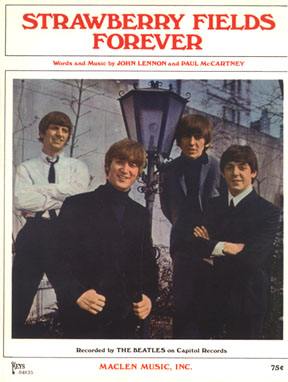 Paul's districtive Mellotron introduction, which is a shortened version of what he will be playing in the first verse, is played without any accompaniment and is four measures long, the first three being in 4/4 time and the fourth measure being in 2/4 time. The ten-measure chorus begins with a chord played on bass guitar as the downbeat, followed by John's double-tracked vocal as the Mellotron holds out a single note and the bass chord rings out. Ringo's first introductory drum fill comes in at the beginning of the second measure as George's Mellotron guitar enters on the three beat of the measure. Paul's districtive Mellotron introduction, which is a shortened version of what he will be playing in the first verse, is played without any accompaniment and is four measures long, the first three being in 4/4 time and the fourth measure being in 2/4 time. The ten-measure chorus begins with a chord played on bass guitar as the downbeat, followed by John's double-tracked vocal as the Mellotron holds out a single note and the bass chord rings out. Ringo's first introductory drum fill comes in at the beginning of the second measure as George's Mellotron guitar enters on the three beat of the measure.
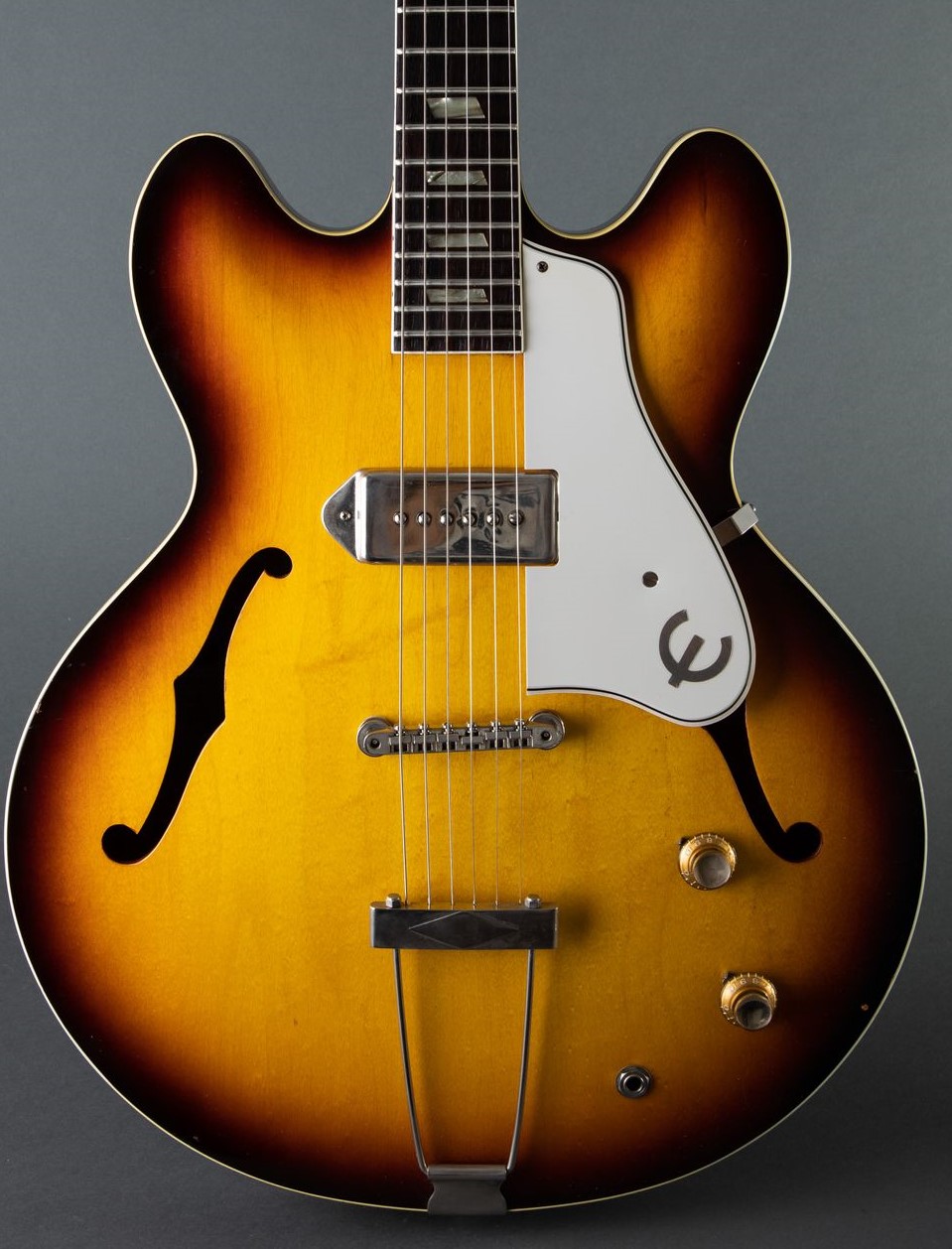 George's sliding Mellotron guitar lands on the downbeat of the third measure along with Ringo's cymbal crash, Paul's bass guitar, John's finger-picking rhythm guitar and George's maracas from the rhythm track. Paul's Mellotron holds out chords for measures three through six but then changes to chopped chords in measures seven and eight. As George's sliding Mellotron chord is held out in measures three and four, we can hear the above mentioned Morse code-like beat that appears in a rhythmic pattern. Measure seven changes time signature to 2/4 during the words “nothing to get,” but then immediately changes back to 4/4 for measure eight (“hung about”). Then the ninth measure changes to 6/8 time while John sings triplets with the lyrics “strawberry fields for-”, this being accompanied by John's chord strumming rhythm guitar, Paul's Mellotron chords and overdubbed bass notes, and George's maraca accents on the 1-2-3-5-6 beats of the measure. The tenth and final measure of the chorus reverts back to 4/4 time once again and consists of John singing “-ever” while the Mellotron holds out a single low note, John's final rhythm guitar chord rings out and Paul's bass note adds a low end to the sound. Ringo stops drumming altogether for the last two measures of the chorus. George's sliding Mellotron guitar lands on the downbeat of the third measure along with Ringo's cymbal crash, Paul's bass guitar, John's finger-picking rhythm guitar and George's maracas from the rhythm track. Paul's Mellotron holds out chords for measures three through six but then changes to chopped chords in measures seven and eight. As George's sliding Mellotron chord is held out in measures three and four, we can hear the above mentioned Morse code-like beat that appears in a rhythmic pattern. Measure seven changes time signature to 2/4 during the words “nothing to get,” but then immediately changes back to 4/4 for measure eight (“hung about”). Then the ninth measure changes to 6/8 time while John sings triplets with the lyrics “strawberry fields for-”, this being accompanied by John's chord strumming rhythm guitar, Paul's Mellotron chords and overdubbed bass notes, and George's maraca accents on the 1-2-3-5-6 beats of the measure. The tenth and final measure of the chorus reverts back to 4/4 time once again and consists of John singing “-ever” while the Mellotron holds out a single low note, John's final rhythm guitar chord rings out and Paul's bass note adds a low end to the sound. Ringo stops drumming altogether for the last two measures of the chorus.
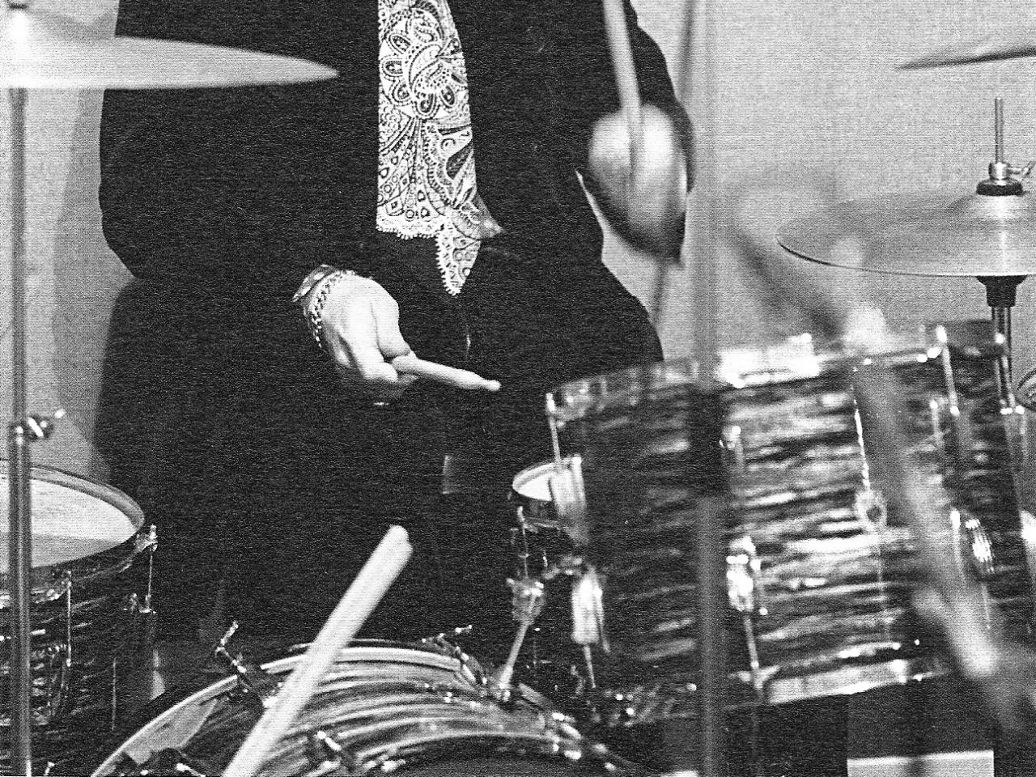 Each of the three verses is a standard eight-measures long and remains in 4/4 time throughout. The first measure of the first verse begins with John's single-tracked vocals singing “living is easy...” while Paul repeats his Mellotron introduction phrases and George plays a steady maraca rhythm. Ringo adds another introductory drum fill in the second measure, while the full band arrangement is resumed in the third measure and remains as such throughout the rest of the verse, this consisting of John's rhythm guitar, Paul's bass and Ringo's drums. Paul holds out Mellotron chords throughout except for measure six where he returns to playing quarter-note chops during John's lyric “-one but it all works out.” Another added element is Ringo's drum fill at the end of measure four, his third for the song so far. John sings single-tracked throughout the verse as he does with every verse of the released version, all choruses featuring double-tracked vocals. Each of the three verses is a standard eight-measures long and remains in 4/4 time throughout. The first measure of the first verse begins with John's single-tracked vocals singing “living is easy...” while Paul repeats his Mellotron introduction phrases and George plays a steady maraca rhythm. Ringo adds another introductory drum fill in the second measure, while the full band arrangement is resumed in the third measure and remains as such throughout the rest of the verse, this consisting of John's rhythm guitar, Paul's bass and Ringo's drums. Paul holds out Mellotron chords throughout except for measure six where he returns to playing quarter-note chops during John's lyric “-one but it all works out.” Another added element is Ringo's drum fill at the end of measure four, his third for the song so far. John sings single-tracked throughout the verse as he does with every verse of the released version, all choruses featuring double-tracked vocals.
 The second chorus then proceeds which is primarily the same structurally (except for it being eleven-measures long instead of ten). However, since the transition between the slower version and the faster version happens here, the instrumentation and arrangement could hardly be any more different. The first measure consists of John's double-tracked vocals accompanied by Paul's single-note Mellotron alone. The second measure begins yet another introductory drum fill by Ringo which is cut off midstream on the third beat of the measure at the lyric “going to...” Ringo completes this drum fill with the one he performed at this point in the faster version of the song, a difference in drum tone being detected because of this recording using a substitute producer/engineer as well as the track being slowed down substantially to match up the tempo and key of the song. John's vocals also noticeably sound eerily lower in tone at this point, which creates a menacing feel to the mind-altering experience one may have in this mysterious “Strawberry Fields” place! The second chorus then proceeds which is primarily the same structurally (except for it being eleven-measures long instead of ten). However, since the transition between the slower version and the faster version happens here, the instrumentation and arrangement could hardly be any more different. The first measure consists of John's double-tracked vocals accompanied by Paul's single-note Mellotron alone. The second measure begins yet another introductory drum fill by Ringo which is cut off midstream on the third beat of the measure at the lyric “going to...” Ringo completes this drum fill with the one he performed at this point in the faster version of the song, a difference in drum tone being detected because of this recording using a substitute producer/engineer as well as the track being slowed down substantially to match up the tempo and key of the song. John's vocals also noticeably sound eerily lower in tone at this point, which creates a menacing feel to the mind-altering experience one may have in this mysterious “Strawberry Fields” place!
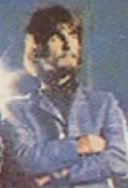 Other elements that appear here include George's Mellotron guitar falling from the second to the third measure and Paul holding out a single Mellotron note in the third and fourth measure. Also, the cellos play a low foreboding score by George Martin while Paul comes in on timpani, George Harrison on bongos, Mal Evans on tambourine and Ringo on drums who now is even more generous with drum fills. Also adding to the percussive din is the backward drumming as produced by Dave Harries on December 8th, this being heard in all the remaining choruses of the recording. The trumpets appear for the first time in measures seven and eight. The climactic ninth measure displays the cellos underlying John's very British-sounding lyric “strawberry fields foreveh!” with a deep bass resonance which is held out commandingly throughout the tenth and eleventh measures of this chorus. Ringo and Mal Evans percussively accent John's final lyrics and then fall off for the remainder of the chorus. The added eleventh measure is taken up by George Harrison's falling swaramandala eighth-note melody line while the cellos still hold down the low end. Other elements that appear here include George's Mellotron guitar falling from the second to the third measure and Paul holding out a single Mellotron note in the third and fourth measure. Also, the cellos play a low foreboding score by George Martin while Paul comes in on timpani, George Harrison on bongos, Mal Evans on tambourine and Ringo on drums who now is even more generous with drum fills. Also adding to the percussive din is the backward drumming as produced by Dave Harries on December 8th, this being heard in all the remaining choruses of the recording. The trumpets appear for the first time in measures seven and eight. The climactic ninth measure displays the cellos underlying John's very British-sounding lyric “strawberry fields foreveh!” with a deep bass resonance which is held out commandingly throughout the tenth and eleventh measures of this chorus. Ringo and Mal Evans percussively accent John's final lyrics and then fall off for the remainder of the chorus. The added eleventh measure is taken up by George Harrison's falling swaramandala eighth-note melody line while the cellos still hold down the low end.
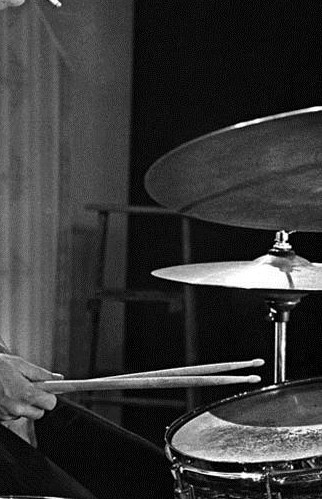 Verse two is extremely different from verse one instrumentally although it is identical structurally. There are no keyboards or guitars of any kind, the trumpets and cellos being the main instruments. John sings single tracked while the trumpets hold out a unified chord throughout. On the three beat of the first measure we hear a stray final note from George's surmandal (on the word “think”) and then Ringo's carefully planned backwards cymbals are panned in by the end of the second measure, which become louder as the verse continues. On the third beat of the fourth measure the cellos enter the picture holding out harmonized notes through the fifth and sixth measures. The cellos then change to eighth notes for the seventh and eighth measures while a crashed cymbal dissolves at the fourth beat of the eighth measure. Verse two is extremely different from verse one instrumentally although it is identical structurally. There are no keyboards or guitars of any kind, the trumpets and cellos being the main instruments. John sings single tracked while the trumpets hold out a unified chord throughout. On the three beat of the first measure we hear a stray final note from George's surmandal (on the word “think”) and then Ringo's carefully planned backwards cymbals are panned in by the end of the second measure, which become louder as the verse continues. On the third beat of the fourth measure the cellos enter the picture holding out harmonized notes through the fifth and sixth measures. The cellos then change to eighth notes for the seventh and eighth measures while a crashed cymbal dissolves at the fourth beat of the eighth measure.
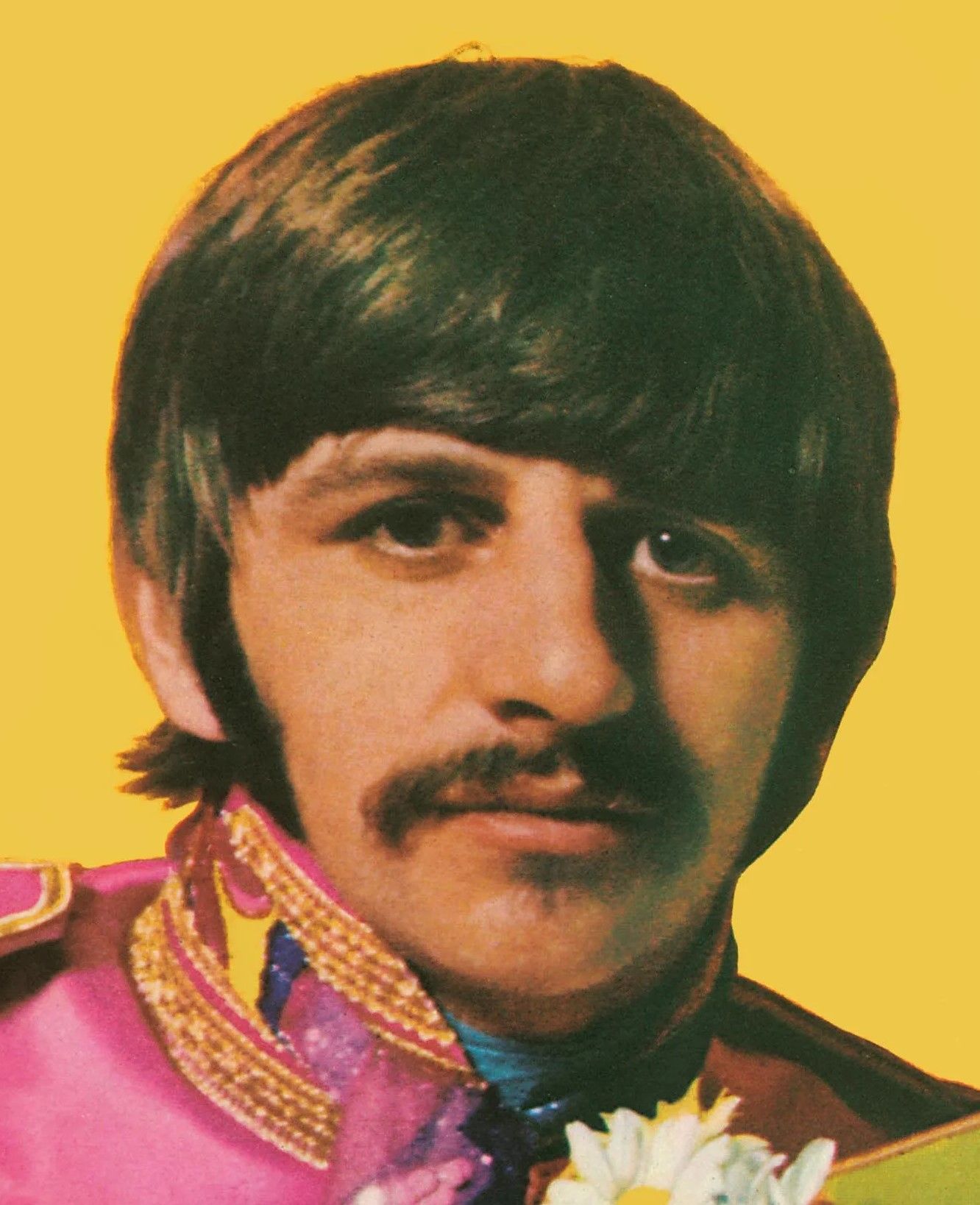 The third chorus then begins with the cellos holding out their low notes as a pad for John's double-tracked vocals. George's falling guitar and surmandal playing, Paul's single note Mellotron playing, Ringo's drums (frontwards and backwards) and the heavy percussion are performed quite similarly to what was heard in the second chorus, but George Martin's score for the cellos and trumpets have become more elaborate this time around. The third chorus then begins with the cellos holding out their low notes as a pad for John's double-tracked vocals. George's falling guitar and surmandal playing, Paul's single note Mellotron playing, Ringo's drums (frontwards and backwards) and the heavy percussion are performed quite similarly to what was heard in the second chorus, but George Martin's score for the cellos and trumpets have become more elaborate this time around.
 The third verse, while similar to the second, has some noticeable differences as well. The trumpets are the first to appear as a backdrop this time, playing a quarter-note pattern for the first three measures. They stop in the fourth measure to allow the cellos to appear playing quarter-notes for the second half of that measure, but then play a triplet pattern for the fifth measure and the first half of the sixth measure, going back to quarter-notes for the second half of that measure. The trumpets come back in playing half-notes for the seventh and eighth measures while the cellos play eighth-notes throughout the seventh and eighth measures, changing to sixteenth-notes on the final beat of the eighth measure. Also noteworthy are Ringo's backwards cymbals which change from quarter-notes to sixteenth-notes from the sixth measure until the verse completes. The third verse, while similar to the second, has some noticeable differences as well. The trumpets are the first to appear as a backdrop this time, playing a quarter-note pattern for the first three measures. They stop in the fourth measure to allow the cellos to appear playing quarter-notes for the second half of that measure, but then play a triplet pattern for the fifth measure and the first half of the sixth measure, going back to quarter-notes for the second half of that measure. The trumpets come back in playing half-notes for the seventh and eighth measures while the cellos play eighth-notes throughout the seventh and eighth measures, changing to sixteenth-notes on the final beat of the eighth measure. Also noteworthy are Ringo's backwards cymbals which change from quarter-notes to sixteenth-notes from the sixth measure until the verse completes.
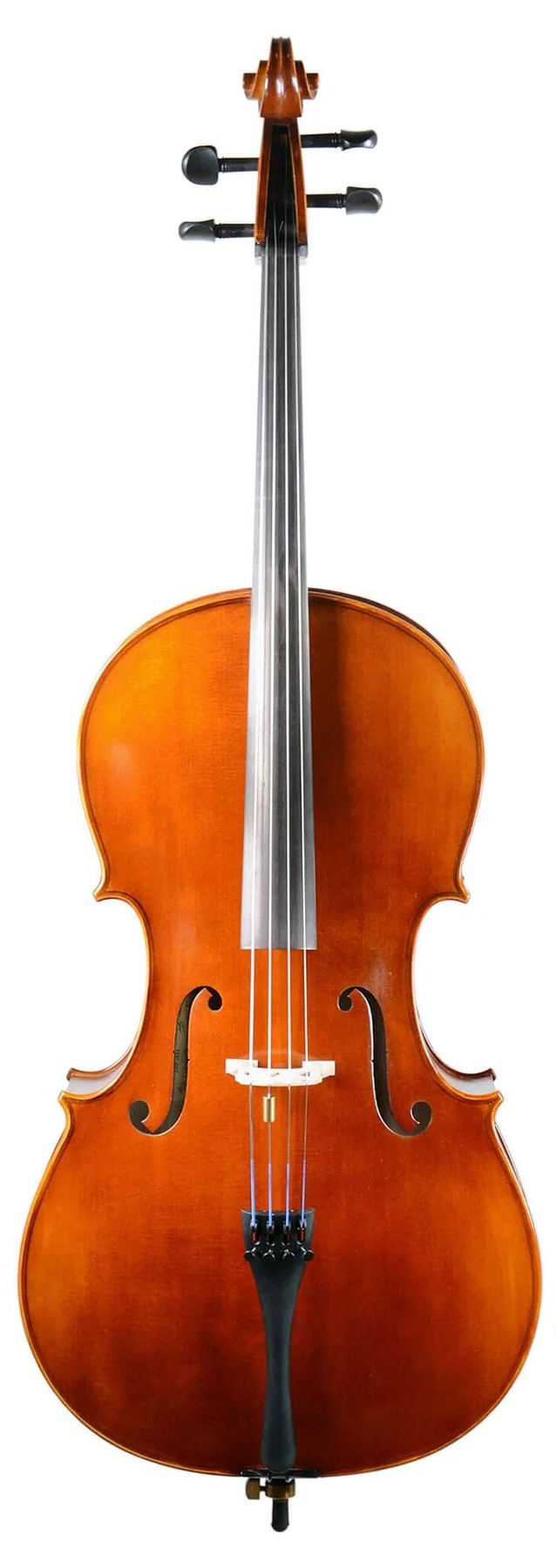 The fourth and final chorus then commences, this one being fifteen-measures long. All of the elements of the previous two choruses (except the surmandal) are kept intact, the cello and trumpet score being changed up a little once again. The first vocal line this time, however, is sung in harmony, the only harmony singing in this otherwise elaborate arrangement. The additional measures for this chorus are as follows: The final phrase “strawberry fields forever” is repeated three times and the eleventh surmandal measure is omitted, which results in the eleventh measure now being in 6/8 time to accommodate John's repeating the song's title a second time. The twelfth measure is in 3/4 time as a space-keeper, while the thirteenth measure is also in 6/8 time for the third repeat of the song's title. Two measures of 4/4 end this chorus, the second featuring a lead guitar figure from Paul as a segue into the meandering conclusion of the song. The cello and trumpet score, Ringo's drum fills and the assorted percussion follow along as the ending pattern of this chorus unfolds. The fourth and final chorus then commences, this one being fifteen-measures long. All of the elements of the previous two choruses (except the surmandal) are kept intact, the cello and trumpet score being changed up a little once again. The first vocal line this time, however, is sung in harmony, the only harmony singing in this otherwise elaborate arrangement. The additional measures for this chorus are as follows: The final phrase “strawberry fields forever” is repeated three times and the eleventh surmandal measure is omitted, which results in the eleventh measure now being in 6/8 time to accommodate John's repeating the song's title a second time. The twelfth measure is in 3/4 time as a space-keeper, while the thirteenth measure is also in 6/8 time for the third repeat of the song's title. Two measures of 4/4 end this chorus, the second featuring a lead guitar figure from Paul as a segue into the meandering conclusion of the song. The cello and trumpet score, Ringo's drum fills and the assorted percussion follow along as the ending pattern of this chorus unfolds.
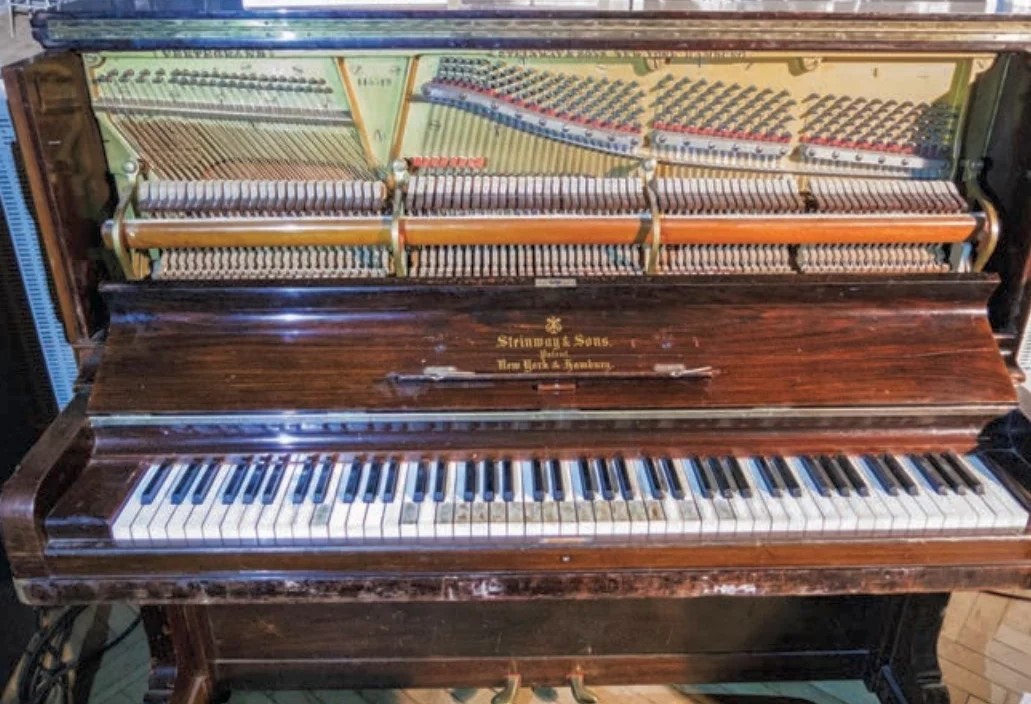 Now the song jumps into the psychedelic twenty-seven measure conclusion. The heavy percussion and drums, which were double-tracked, propel these measures while the other elements appear to be added in an arbitrary fashion. Paul begins by plunking quarter-note chords on a piano, which he continues to do until the song fades. George Martin had the cellos play a simple score for measures one through four and then measure six. Paul plays a simple guitar passage in measure five, while George Harrison reprises his surmandal in measures seven through twelve, the instrument also being detected in measures three and five among the cellos. During these measures, the song begins to fade away, fooling the listener into thinking the song is over. In these quiet moments, in measures twelve through fourteen, we start to hear John's indistinguishable vocal hi-jinks, which carry on through to the end of the recording. Now the song jumps into the psychedelic twenty-seven measure conclusion. The heavy percussion and drums, which were double-tracked, propel these measures while the other elements appear to be added in an arbitrary fashion. Paul begins by plunking quarter-note chords on a piano, which he continues to do until the song fades. George Martin had the cellos play a simple score for measures one through four and then measure six. Paul plays a simple guitar passage in measure five, while George Harrison reprises his surmandal in measures seven through twelve, the instrument also being detected in measures three and five among the cellos. During these measures, the song begins to fade away, fooling the listener into thinking the song is over. In these quiet moments, in measures twelve through fourteen, we start to hear John's indistinguishable vocal hi-jinks, which carry on through to the end of the recording.
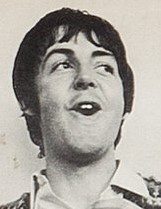 Upon examination (especially of the bootleg recordings), the exactness of the downbeat to the song becomes somewhat obscured, creating a disorienting feeling, which may have influenced George Martin to lower the volume here to hide the sloppiness. During this sloppiness, in measure fifteen, is the first appearance of the above mentioned “looped flutes” Mellotron from Paul (or possibly George Martin or John), which signals the song to be faded up once again, the highest volume being reached with some quarter- note trumpet blasts in measures eighteen through twenty. The Mellotron dissipates with the appearance of the trumpets, but then reappears for measures twenty-one through twenty-three. As the Mellotron disappears, the song begins to fade again while John mutters “cranberry sauce” for the first time in measure twenty-four and then again in measure twenty-six (as heard in some versions of the recording). As Paul still fiddles on the piano and the drums/percussion finally wind down, this history changing recording finally fades from view. Upon examination (especially of the bootleg recordings), the exactness of the downbeat to the song becomes somewhat obscured, creating a disorienting feeling, which may have influenced George Martin to lower the volume here to hide the sloppiness. During this sloppiness, in measure fifteen, is the first appearance of the above mentioned “looped flutes” Mellotron from Paul (or possibly George Martin or John), which signals the song to be faded up once again, the highest volume being reached with some quarter- note trumpet blasts in measures eighteen through twenty. The Mellotron dissipates with the appearance of the trumpets, but then reappears for measures twenty-one through twenty-three. As the Mellotron disappears, the song begins to fade again while John mutters “cranberry sauce” for the first time in measure twenty-four and then again in measure twenty-six (as heard in some versions of the recording). As Paul still fiddles on the piano and the drums/percussion finally wind down, this history changing recording finally fades from view.
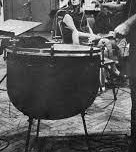 After the engineering team's excellent editing and tape manipulations, John's lead vocals never sounded any more menacing or hypnotic, which adds perfectly to the song's lyrical mystery. His competent finger-picking electric guitar work in the first segment is proof of his adeptness with the instrument, if anyone ever doubts his ability as a guitarist. Paul, as usual, stirred many ladles in this pot with his masterful Mellotron playing, as well as his contributions on bass, piano, lead guitar and timpani. Ringo shines brightly with his double-tracked drumming, flamboyant fills, and strategic backwards cymbal work. George may be thought to have taken a back seat on this song, but his contributions here include Mellotron, surmandal, bongos and even maracas, all done well. After the engineering team's excellent editing and tape manipulations, John's lead vocals never sounded any more menacing or hypnotic, which adds perfectly to the song's lyrical mystery. His competent finger-picking electric guitar work in the first segment is proof of his adeptness with the instrument, if anyone ever doubts his ability as a guitarist. Paul, as usual, stirred many ladles in this pot with his masterful Mellotron playing, as well as his contributions on bass, piano, lead guitar and timpani. Ringo shines brightly with his double-tracked drumming, flamboyant fills, and strategic backwards cymbal work. George may be thought to have taken a back seat on this song, but his contributions here include Mellotron, surmandal, bongos and even maracas, all done well.
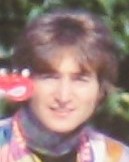 As far as George Martin's role, he explains: “In John's case, his ideas weren't all that concise, so I had to try to realize what he wanted and how to effect it, and I would do this either by means of an orchestra or sound effects or a combination of both. This role was an interesting one because it presented many challenges for me. I would come up to new problems every day because the songs themselves presented those problems. The songs in the early days were straightforward and you couldn't play around with them too much. Here we are building sound pictures.” George Martin, along with Geoff Emerick, established the knack for transforming John's ideas into masterpieces, evidenced best in “Strawberry Fields Forever.” As far as George Martin's role, he explains: “In John's case, his ideas weren't all that concise, so I had to try to realize what he wanted and how to effect it, and I would do this either by means of an orchestra or sound effects or a combination of both. This role was an interesting one because it presented many challenges for me. I would come up to new problems every day because the songs themselves presented those problems. The songs in the early days were straightforward and you couldn't play around with them too much. Here we are building sound pictures.” George Martin, along with Geoff Emerick, established the knack for transforming John's ideas into masterpieces, evidenced best in “Strawberry Fields Forever.”
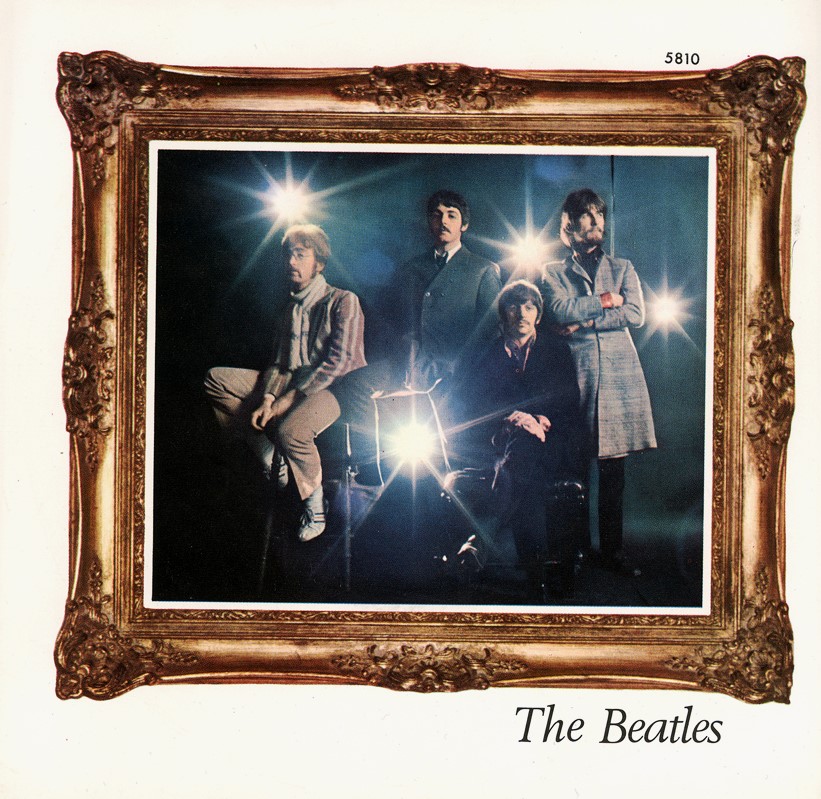
US picture sleeve
American Releases
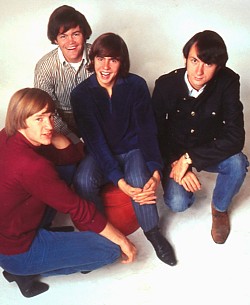 “Strawberry Fields Forever” was first released in America as a single on February 13th, 1967, four days before it was released as a single in Britain. Six months had passed since The Beatles’ last single (“Yellow Submarine / Eleanor Rigby”) and manager Brian Epstein was worried that the group’s popularity would diminish in the face of the new television pop sensations, The Monkees. George Martin relates, “It was with a tinge of panic in his voice, therefore, that Brian came to me and said, ‘We need a single out, George, fast. What have you got? I want the best thing you’ve got.’ He was determined to make up any lost ground, to keep The Beatles firmly in the limelight’s brilliant blaze…Realizing how desperate Brian was feeling, I decided to give him a superstrong combination, a double-punch that could not fail, an unbeatable linking of two all-time great songs: ‘Strawberry Fields Forever’ and ‘Penny Lane.’ These songs would, I told him, make a fantastic double-a-sided disc.” (Paul’s book “Many Years From Now” indicates that “initially the single was to be ‘Strawberry Fields Forever’ backed with ‘When I’m Sixty-Four.’) “Strawberry Fields Forever” was first released in America as a single on February 13th, 1967, four days before it was released as a single in Britain. Six months had passed since The Beatles’ last single (“Yellow Submarine / Eleanor Rigby”) and manager Brian Epstein was worried that the group’s popularity would diminish in the face of the new television pop sensations, The Monkees. George Martin relates, “It was with a tinge of panic in his voice, therefore, that Brian came to me and said, ‘We need a single out, George, fast. What have you got? I want the best thing you’ve got.’ He was determined to make up any lost ground, to keep The Beatles firmly in the limelight’s brilliant blaze…Realizing how desperate Brian was feeling, I decided to give him a superstrong combination, a double-punch that could not fail, an unbeatable linking of two all-time great songs: ‘Strawberry Fields Forever’ and ‘Penny Lane.’ These songs would, I told him, make a fantastic double-a-sided disc.” (Paul’s book “Many Years From Now” indicates that “initially the single was to be ‘Strawberry Fields Forever’ backed with ‘When I’m Sixty-Four.’)
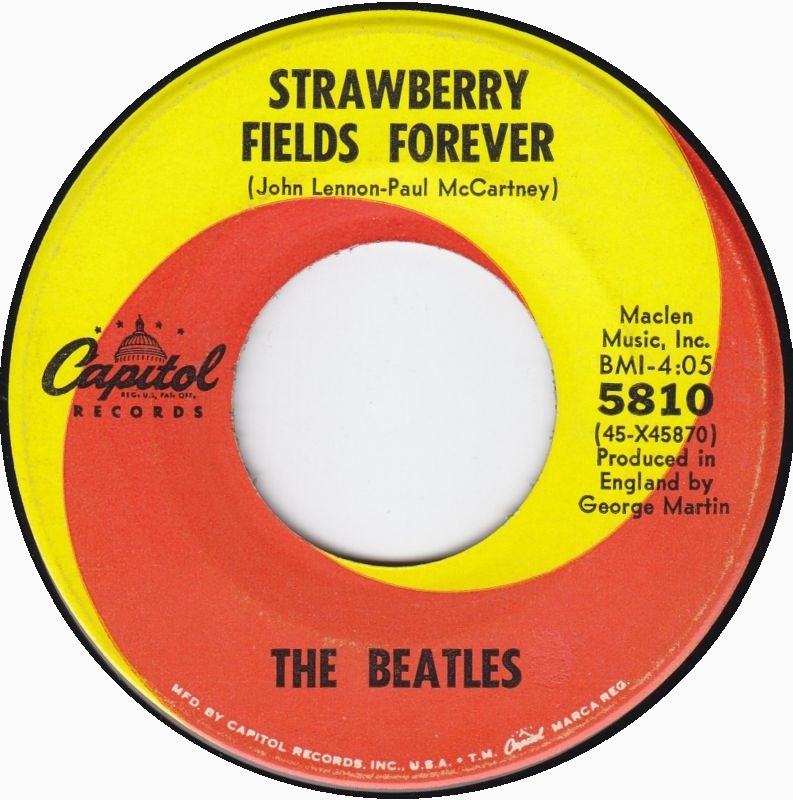 George Martin was correct, the single being viewed to this day as one of the all-time best a- and b-sided pairings in the history of recorded singles. “Penny Lane” may have been favored slightly more by American disc jockeys at the time, which propelled it to #1 on the Billboard Hot 100, “Strawberry Fields Forever” rang in at a very respectful #8 showing. George Martin was correct, the single being viewed to this day as one of the all-time best a- and b-sided pairings in the history of recorded singles. “Penny Lane” may have been favored slightly more by American disc jockeys at the time, which propelled it to #1 on the Billboard Hot 100, “Strawberry Fields Forever” rang in at a very respectful #8 showing.
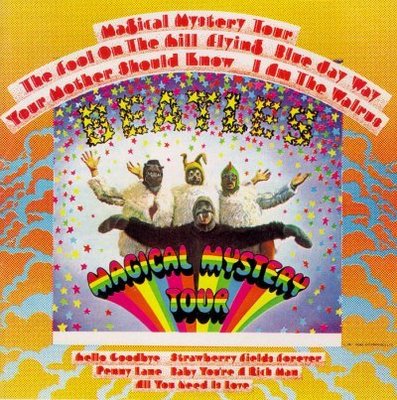 Because of this single being released, The Beatles did not include either of these songs on their forthcoming “Sgt. Pepper’s Lonely Hearts Club Band” album as originally planned. However, on November 27th, 1967, Capitol Records decided to turn the six songs from the “Magical Mystery Tour” EP into a full length album by including their 1967 singles on side two, “Strawberry Fields Forever” being one of them. Capitol acquired a true stereo mix to include on this release, the vinyl edition continuing to be reissued in the US throughout the years. The album topped the Billboard albums chart and ended up selling over six million copies The album was first released on compact disc on September 21st, 1987 (including the slightly longer British stereo mix of the song) and then in a newly remastered condition on September 9th, 2009. Because of this single being released, The Beatles did not include either of these songs on their forthcoming “Sgt. Pepper’s Lonely Hearts Club Band” album as originally planned. However, on November 27th, 1967, Capitol Records decided to turn the six songs from the “Magical Mystery Tour” EP into a full length album by including their 1967 singles on side two, “Strawberry Fields Forever” being one of them. Capitol acquired a true stereo mix to include on this release, the vinyl edition continuing to be reissued in the US throughout the years. The album topped the Billboard albums chart and ended up selling over six million copies The album was first released on compact disc on September 21st, 1987 (including the slightly longer British stereo mix of the song) and then in a newly remastered condition on September 9th, 2009.
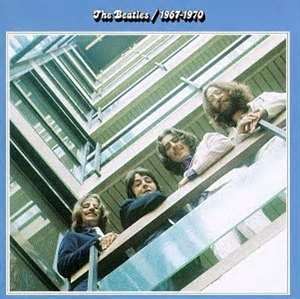 “Strawberry Fields Forever” was favored to be the opening track of the April 2nd, 1973 released double-compilation set “The Beatles/1967-1970” (aka “The Blue Album”). This album was released on compact disc for the first time on September 20th, 1993, a remastered re-release coming out on August 10th, 2010. “Strawberry Fields Forever” was favored to be the opening track of the April 2nd, 1973 released double-compilation set “The Beatles/1967-1970” (aka “The Blue Album”). This album was released on compact disc for the first time on September 20th, 1993, a remastered re-release coming out on August 10th, 2010.
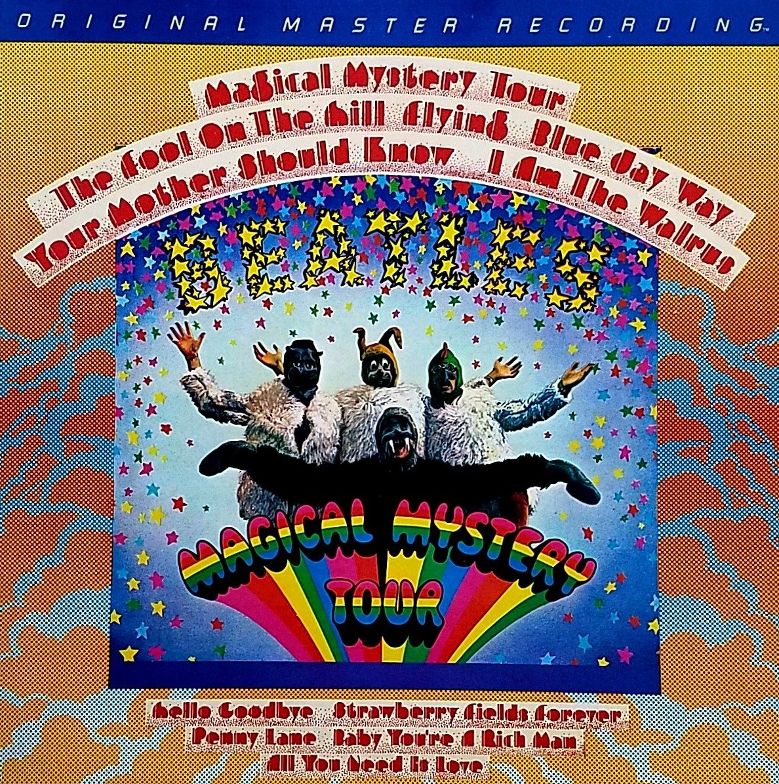 An interesting US vinyl edition of the “Magical Mystery Tour” album was released on February 1st, 1981. This was manufactured by Mobile Fidelity Sound Lab in Chatsworth, California and was part of their "Original Master Recording" series, which prepared its albums utilizing half-speed mastering technology from the original master tapes. In this case, however, they leased the master tape from EMI in the UK, not realizing that this was a second generation master tape originally supplied by Capitol Records in America. While this release sounded superior to conventional vinyl versions, it still contained the duophonic (fake stereo) mixes of “Penny Lane,” “Baby, You're A Rich Man” and “All You Need Is Love.” Also, as was the case with all of the vinyl editions of the album by this time, the original multi-page booklet was omitted from this new vinyl release. Nevertheless, this edition of the album was only available for a short time and is quite collectible today.
The next release of the song was actually not on a Beatles album, but on the soundtrack for the documentary film “Imagine: John Lennon.” The double album (or single CD), released on October 10th, 1988, featured highlights of his career with The Beatles as well as his solo career. The album peaked at #31 on the Billboard album chart. An interesting US vinyl edition of the “Magical Mystery Tour” album was released on February 1st, 1981. This was manufactured by Mobile Fidelity Sound Lab in Chatsworth, California and was part of their "Original Master Recording" series, which prepared its albums utilizing half-speed mastering technology from the original master tapes. In this case, however, they leased the master tape from EMI in the UK, not realizing that this was a second generation master tape originally supplied by Capitol Records in America. While this release sounded superior to conventional vinyl versions, it still contained the duophonic (fake stereo) mixes of “Penny Lane,” “Baby, You're A Rich Man” and “All You Need Is Love.” Also, as was the case with all of the vinyl editions of the album by this time, the original multi-page booklet was omitted from this new vinyl release. Nevertheless, this edition of the album was only available for a short time and is quite collectible today.
The next release of the song was actually not on a Beatles album, but on the soundtrack for the documentary film “Imagine: John Lennon.” The double album (or single CD), released on October 10th, 1988, featured highlights of his career with The Beatles as well as his solo career. The album peaked at #31 on the Billboard album chart.
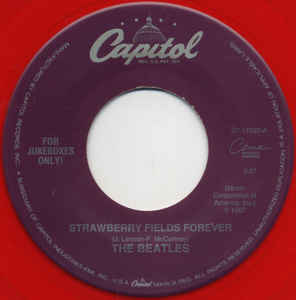 A limited edition red vinyl pressing of "Strawberry Fields Forever / Penny Lane" was released on Capitol Cema in March of 1994, which is quite a rare find today. A limited edition red vinyl pressing of "Strawberry Fields Forever / Penny Lane" was released on Capitol Cema in March of 1994, which is quite a rare find today.
Special attention was given to “Strawberry Fields Forever” on the March 18th, 1996 released double-disc “Anthology 2.” Three versions of the song opened up the second disc of the set: First was the home demo John recorded in early November of 1966, then the previously unreleased “take one” from EMI studios from November 24th of that year, and finally a composite of the complete “take seven” from November 29th with the drums and vocal murmurings of the end of “take 26” from December 15th of that year. A very interesting listen for Beatles fans who were unacquainted with bootlegs.
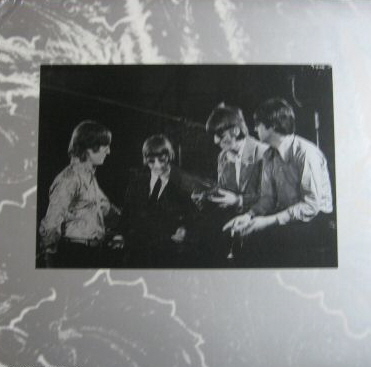 In order to promote the above “Anthology 2” release, Apple distributed both compact disc and vinyl versions of an “Anthology 2 Sampler.” While they each differed in track listings and cover art, both included the “take one” version of “Strawberry Fields Forever” as included on the official “Anthology 2” album. In order to promote the above “Anthology 2” release, Apple distributed both compact disc and vinyl versions of an “Anthology 2 Sampler.” While they each differed in track listings and cover art, both included the “take one” version of “Strawberry Fields Forever” as included on the official “Anthology 2” album.
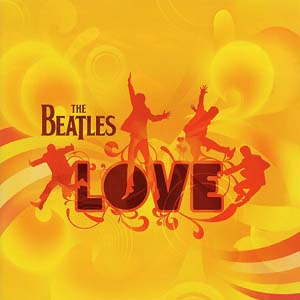 An even more interesting version of the song was concocted by George Martin and his son Giles for the November 20th, 2006 released album “Love.” This version seamlessly pieces together the recorded history of the song, from home demo to final version, with a touch of “Hello Goodbye” thrown in at the end.” Sometime around this time, a demo disc entitled “Love 4 Track Sampler” was released for promotion purposes which featured this unique version of “Strawberry Fields Forever” as the lead-off track. An even more interesting version of the song was concocted by George Martin and his son Giles for the November 20th, 2006 released album “Love.” This version seamlessly pieces together the recorded history of the song, from home demo to final version, with a touch of “Hello Goodbye” thrown in at the end.” Sometime around this time, a demo disc entitled “Love 4 Track Sampler” was released for promotion purposes which featured this unique version of “Strawberry Fields Forever” as the lead-off track.
On September 9th, 2009, the CD box set “The Beatles In Mono” was released which contained the entire mono Beatles catalog in a newly remastered condition, “Strawberry Fields Forever” being among the collection. The vinyl edition of this box set was first released on September 9th, 2014.
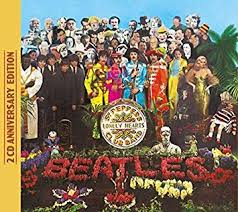 On May 26th, 2017, the 50th Anniversary release of the "Sgt. Pepper" album came out in various editions, the 2015 Giles Martin stereo mix of "Strawberry Fields Forever" being included in both the "2 CD Anniversary Edition" and the "Super Deluxe Edition" box set. The two-CD set also included "take seven" and "take 26," while the box set included all of this as well as "take one" and "take four." On May 26th, 2017, the 50th Anniversary release of the "Sgt. Pepper" album came out in various editions, the 2015 Giles Martin stereo mix of "Strawberry Fields Forever" being included in both the "2 CD Anniversary Edition" and the "Super Deluxe Edition" box set. The two-CD set also included "take seven" and "take 26," while the box set included all of this as well as "take one" and "take four."
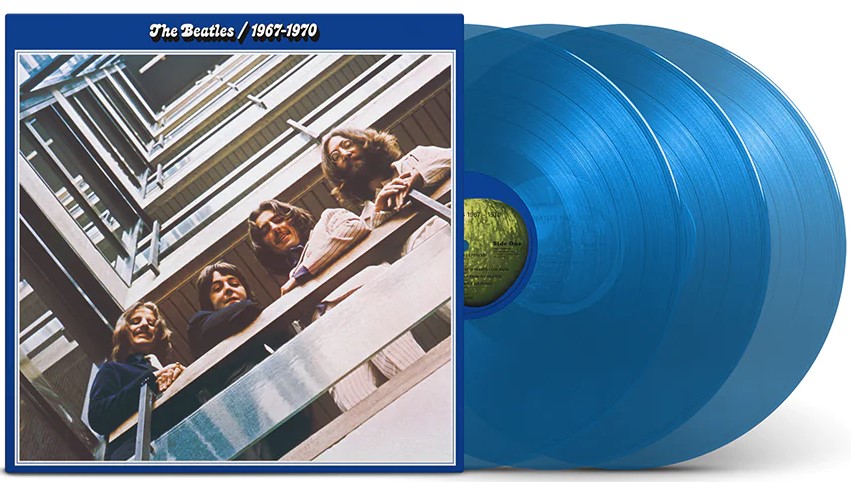 A 50th Anniversay edition of the compilation album "The Beatles / 1967 - 1970" (aka "The Blue Album") was released on November 10th, 2023, the Giles Martin stereo mix of "Strawberry Fields Forever" as detailed above, being included. This expanded release included 12 additional songs for a total of 38 tracks, and was made available as a double CD and as a triple vinyl release on both black and blue vinyl. A 50th Anniversay edition of the compilation album "The Beatles / 1967 - 1970" (aka "The Blue Album") was released on November 10th, 2023, the Giles Martin stereo mix of "Strawberry Fields Forever" as detailed above, being included. This expanded release included 12 additional songs for a total of 38 tracks, and was made available as a double CD and as a triple vinyl release on both black and blue vinyl.
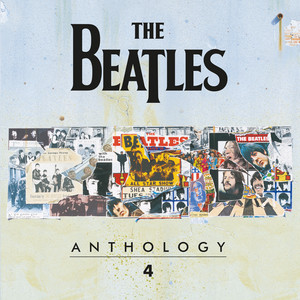 On November 21st, 2025, "Anthology 4" was released on both CD and vinyl, this album also being made available within the "Anthology Collection" box set on CD and on vinyl. "Take 26" of "Strawberry Fields Forever," as detailed above, was included on this release. On November 21st, 2025, "Anthology 4" was released on both CD and vinyl, this album also being made available within the "Anthology Collection" box set on CD and on vinyl. "Take 26" of "Strawberry Fields Forever," as detailed above, was included on this release.
Live Performances
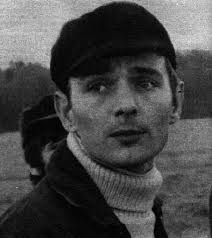 No live concert performances of the song occurred due to The Beatles giving up touring in 1966. However, this new single meant new promo films for viewing on television around the world. Swedish director Peter Goldman was hired for the project. “I received a cable from Mr. (Brian) Epstein and got a plane over to England the same day,” Peter Goldman explains. “I was very happy about working with The Beatles and I wanted to present their new music in an original and interesting manner on TV.” No live concert performances of the song occurred due to The Beatles giving up touring in 1966. However, this new single meant new promo films for viewing on television around the world. Swedish director Peter Goldman was hired for the project. “I received a cable from Mr. (Brian) Epstein and got a plane over to England the same day,” Peter Goldman explains. “I was very happy about working with The Beatles and I wanted to present their new music in an original and interesting manner on TV.”
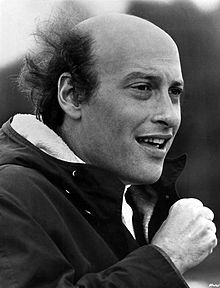 There was one obstacle that Peter Goldman had to deal with. He continues, “Originally, my enthusiasm for presenting English groups on TV in Sweden was fired by Richard Lester’s fine film of The Beatles in ‘A Hard Day’s Night’…I was amazed to find that there was a ban in Britain which prevented The Beatles from miming to their record…so I had to find settings and ideas which were sympathetic to their songs without turning them into comic actors.” There was one obstacle that Peter Goldman had to deal with. He continues, “Originally, my enthusiasm for presenting English groups on TV in Sweden was fired by Richard Lester’s fine film of The Beatles in ‘A Hard Day’s Night’…I was amazed to find that there was a ban in Britain which prevented The Beatles from miming to their record…so I had to find settings and ideas which were sympathetic to their songs without turning them into comic actors.”
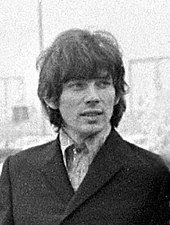 Tony Bramwell, producer of the promo films, relates the setting and ideas used for “Strawberry Fields Forever”: “Klaus Voormann came up with the idea of a strange instrument in a tree…so I had to find a site with a suitable tree, which was Knole Park. We found a piano, ripped it up, and then spent ages going up and down the tree with miles and miles of the glittery string you use to wrap Christmas presents. We didn’t have a storyline as such. We were just trying things out, like changing the speed of the camera, and running the film backwards.” Tony Bramwell, producer of the promo films, relates the setting and ideas used for “Strawberry Fields Forever”: “Klaus Voormann came up with the idea of a strange instrument in a tree…so I had to find a site with a suitable tree, which was Knole Park. We found a piano, ripped it up, and then spent ages going up and down the tree with miles and miles of the glittery string you use to wrap Christmas presents. We didn’t have a storyline as such. We were just trying things out, like changing the speed of the camera, and running the film backwards.”
“Nearly everything went wrong during the filming, but The Beatles were very patient,” Peter Goldman remembers. “When I arranged this weird tree piano in a field for the ‘Strawberry Fields’ clip, all the wires we had tied to the branches of the tree broke in a gust of wind, and we had to begin again.”
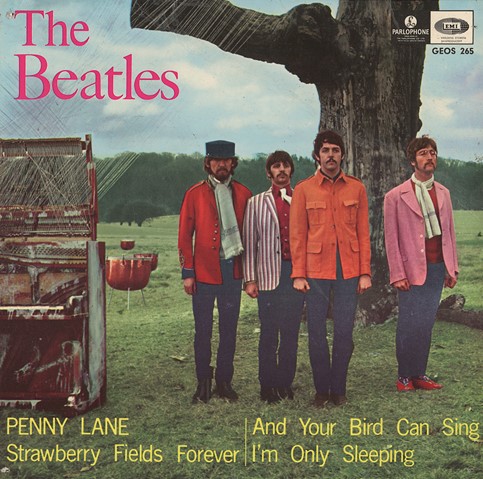 The filming began on the evening of January 30th, 1967, in Knole Park, Sevenoaks, Kent (about 20 miles south-east of London) and then finished up the following afternoon and evening. Mark Lewisohn’s book “The Beatles Chronicle” states: “Among the scenes shot this day (January 31st, 1967) was the one where Paul dropped down from a high branch in the dead oak tree and ran backward to a piano – a sequence which, when played in reverse, showed Paul running towards the tree and jumping up onto the branch. All clever stuff – inspired, no doubt, by The Beatles’ present fascination with backwards recordings.” The filming began on the evening of January 30th, 1967, in Knole Park, Sevenoaks, Kent (about 20 miles south-east of London) and then finished up the following afternoon and evening. Mark Lewisohn’s book “The Beatles Chronicle” states: “Among the scenes shot this day (January 31st, 1967) was the one where Paul dropped down from a high branch in the dead oak tree and ran backward to a piano – a sequence which, when played in reverse, showed Paul running towards the tree and jumping up onto the branch. All clever stuff – inspired, no doubt, by The Beatles’ present fascination with backwards recordings.”
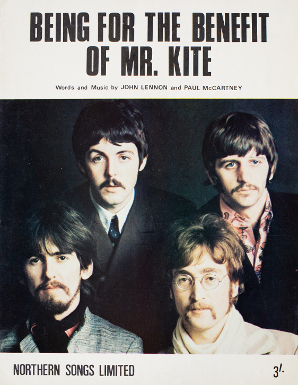 An interesting sidenote is a particular purchase John Lennon made on this second day of filming. John explains: “We’d been filming a TV piece to go with ‘Strawberry Fields Forever.’ There was a break and I went into this (antique) shop and bought an old poster advertising a variety show which starred Mr. Kite.” This, of course, was the catalyst to John and Paul writing the song "Being For The Benefit Of Mr. Kite.” An interesting sidenote is a particular purchase John Lennon made on this second day of filming. John explains: “We’d been filming a TV piece to go with ‘Strawberry Fields Forever.’ There was a break and I went into this (antique) shop and bought an old poster advertising a variety show which starred Mr. Kite.” This, of course, was the catalyst to John and Paul writing the song "Being For The Benefit Of Mr. Kite.”
Surprisingly, Paul decided to periodically perform “Strawberry Fields Forever” during his “World Tour” of 1989/1990, making it part of a medley with "Help!” and “Give Peace A Chance.” This tour ran from July 26th, 1989 (London) to July 29th, 1990 (Chicago).
Conclusion
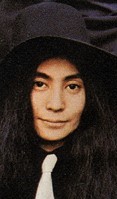 “I was at a cocktail party which was given by an art critic and he said, 'Listen to this,' and he just put (“Strawberry Fields Forever”) on, and he said, 'Can you imagine, pop songs coming to this?' So I just thought, 'Wow!' Even now, I get emotional when I hear the song. This was the first Beatles song I ever heard.” This quote from Yoko Ono encapsulates the overall effect this song has had on the history of popular music. “I was at a cocktail party which was given by an art critic and he said, 'Listen to this,' and he just put (“Strawberry Fields Forever”) on, and he said, 'Can you imagine, pop songs coming to this?' So I just thought, 'Wow!' Even now, I get emotional when I hear the song. This was the first Beatles song I ever heard.” This quote from Yoko Ono encapsulates the overall effect this song has had on the history of popular music.
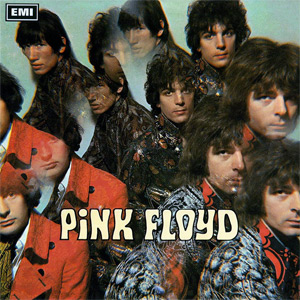 Only recording artists with this degree of foresight, as well as sufficient influence on the current culture, could break open the boundaries of the standard three-minute pop radio format and be welcomed with open arms (eventually if not immediately). The Beatles were able to accomplish this with virtually every release from this time onward. They were not content with following the status quo and it resulted in changing the musical landscape to whatever was deemed palatable to the general public. And what became palatable kept growing and flourishing until today. I'd say it's undeniable that it was The Beatles who made it fashionable for recording artists to express themselves openly and without constraint. “Strawberry Fields Forever” played a big part in helping pop music leave conformity behind forever! Only recording artists with this degree of foresight, as well as sufficient influence on the current culture, could break open the boundaries of the standard three-minute pop radio format and be welcomed with open arms (eventually if not immediately). The Beatles were able to accomplish this with virtually every release from this time onward. They were not content with following the status quo and it resulted in changing the musical landscape to whatever was deemed palatable to the general public. And what became palatable kept growing and flourishing until today. I'd say it's undeniable that it was The Beatles who made it fashionable for recording artists to express themselves openly and without constraint. “Strawberry Fields Forever” played a big part in helping pop music leave conformity behind forever!
Song Summary
“Strawberry Fields Forever”
Written by: John Lennon / Paul McCartney
- Song Written: September and November, 1966
- Song Recorded: November 28, 29 and December 8, 9, 15 & 21, 1966
- First US Release Date: February 13, 1967
- US Single Release: Capitol #5810
- Highest Chart Position: #8
- First US Album Release: Capitol #SMAL-2835 “Magical Mystery Tour”
- British Album Release: Apple #PSCP 718 “The Beatles/1967-1970”
- Length: 4:05
- Key: B flat (generally)
- Producer: George Martin, Dave Harries
- Engineers: Geoff Emerick, Dave Harries, Phil McDonald
Instrumentation (most likely):
- John Lennon - Lead and Harmony Vocals, Rhythm Guitar (1965 Epiphone ES-230TD Casino)
- Paul McCartney - Mellotron (Mark II), Lead Guitar (1964 Fender Esquire), Piano (Hamburg Steinway Baby Grand), Bass (1964 Rickenbacker 4001 S), timpani
- George Harrison - Mellotron (Mark II), surmandal, maracas, bongos
- Ringo Starr - Drums (1964 Ludwig Super Classic Black Oyster Pearl)
- Tony Fisher - Trumpet
- Greg Bowen - Trumpet
- Derek Watkins - Trumpet
- Stanley Roderick - Trumpet
- John Hall - Cello
- Derek Simpson - Cello
- Norman Jones - Cello
- Mal Evans - Tambourine
Written and compiled by David Rybaczewski
|
IF YOU WOULD LIKE TO MAKE A DONATION TO KEEP THIS WEBSITE UP AND RUNNING, PLEASE CLICK BELOW!
|